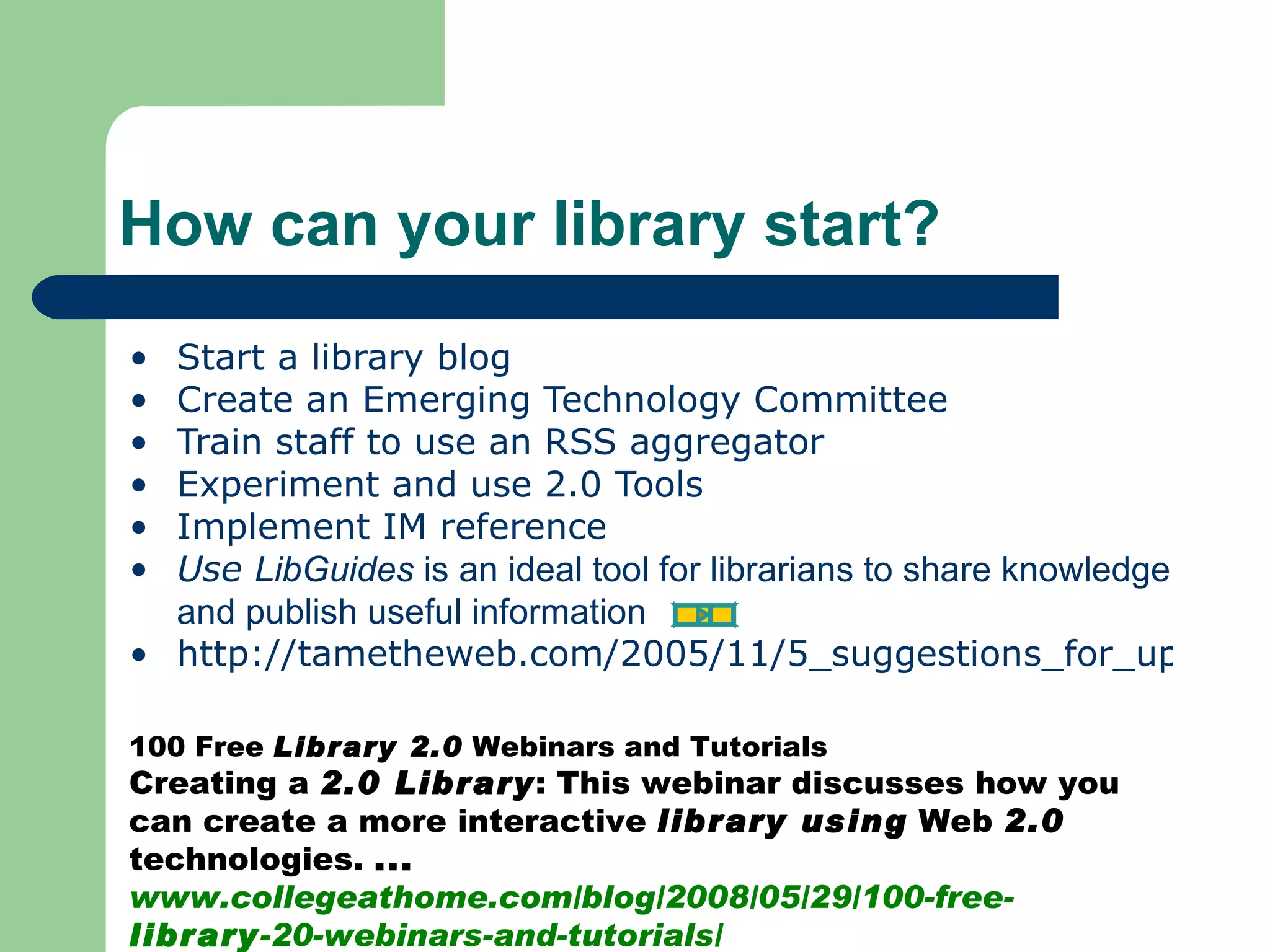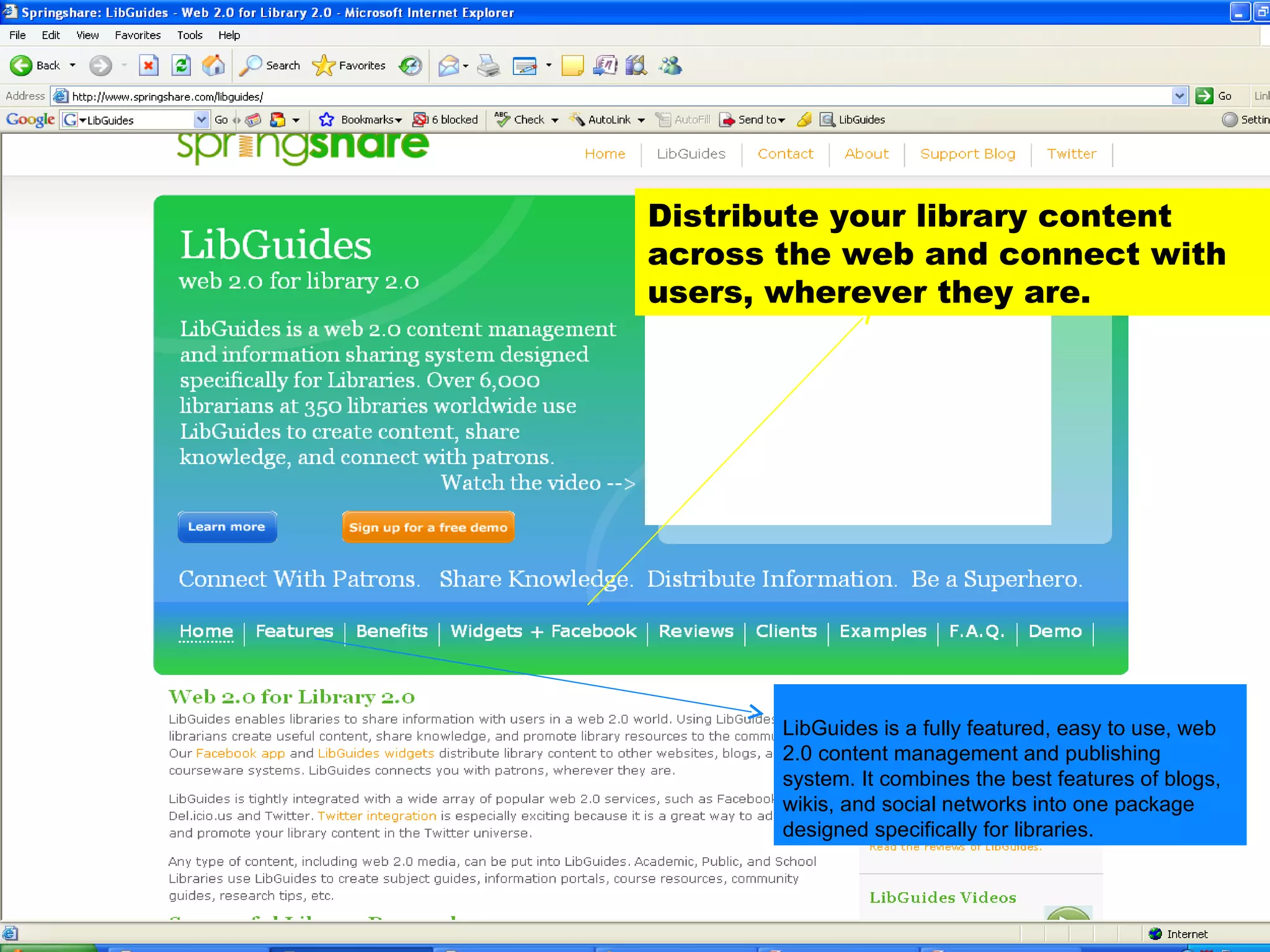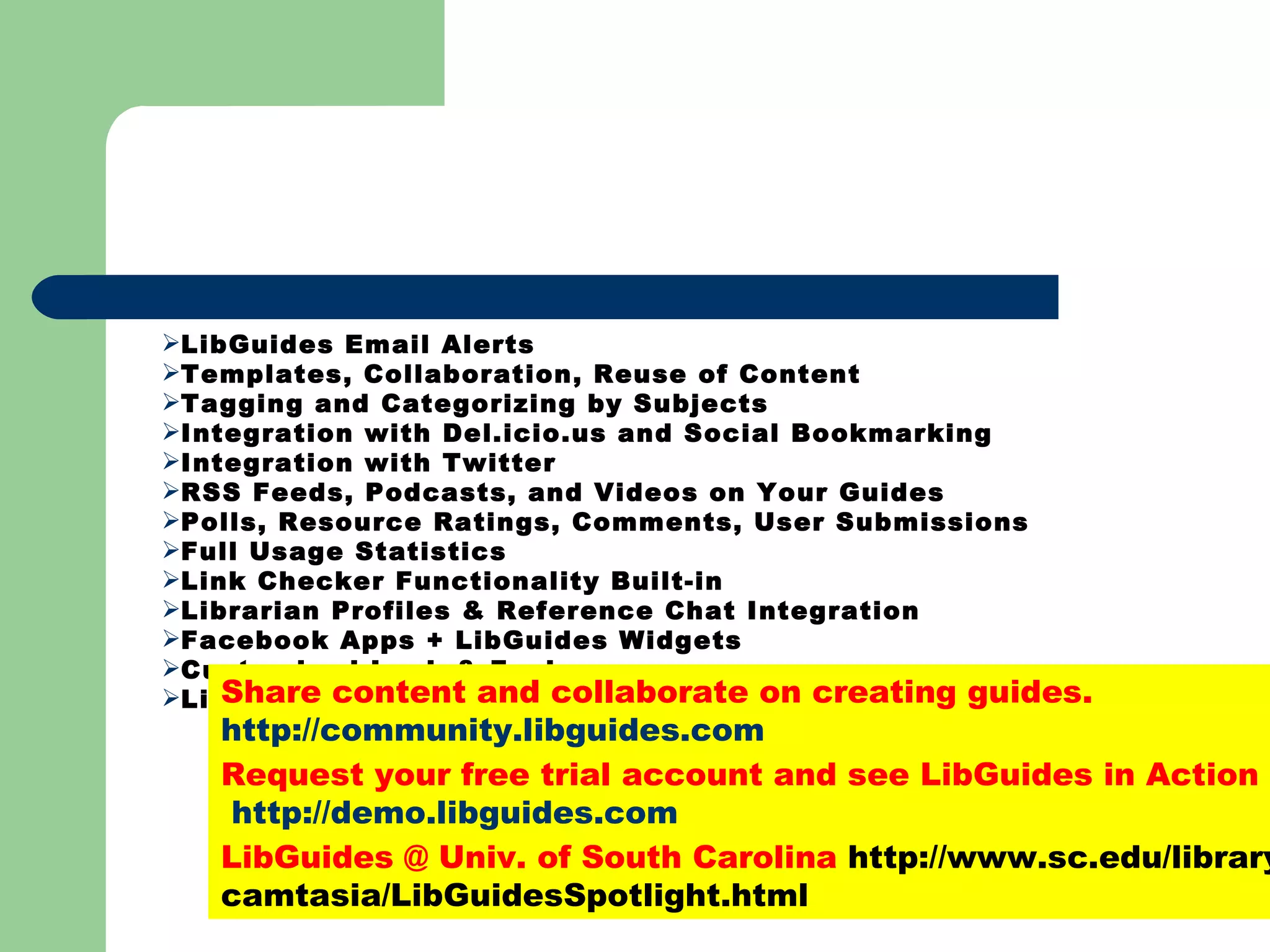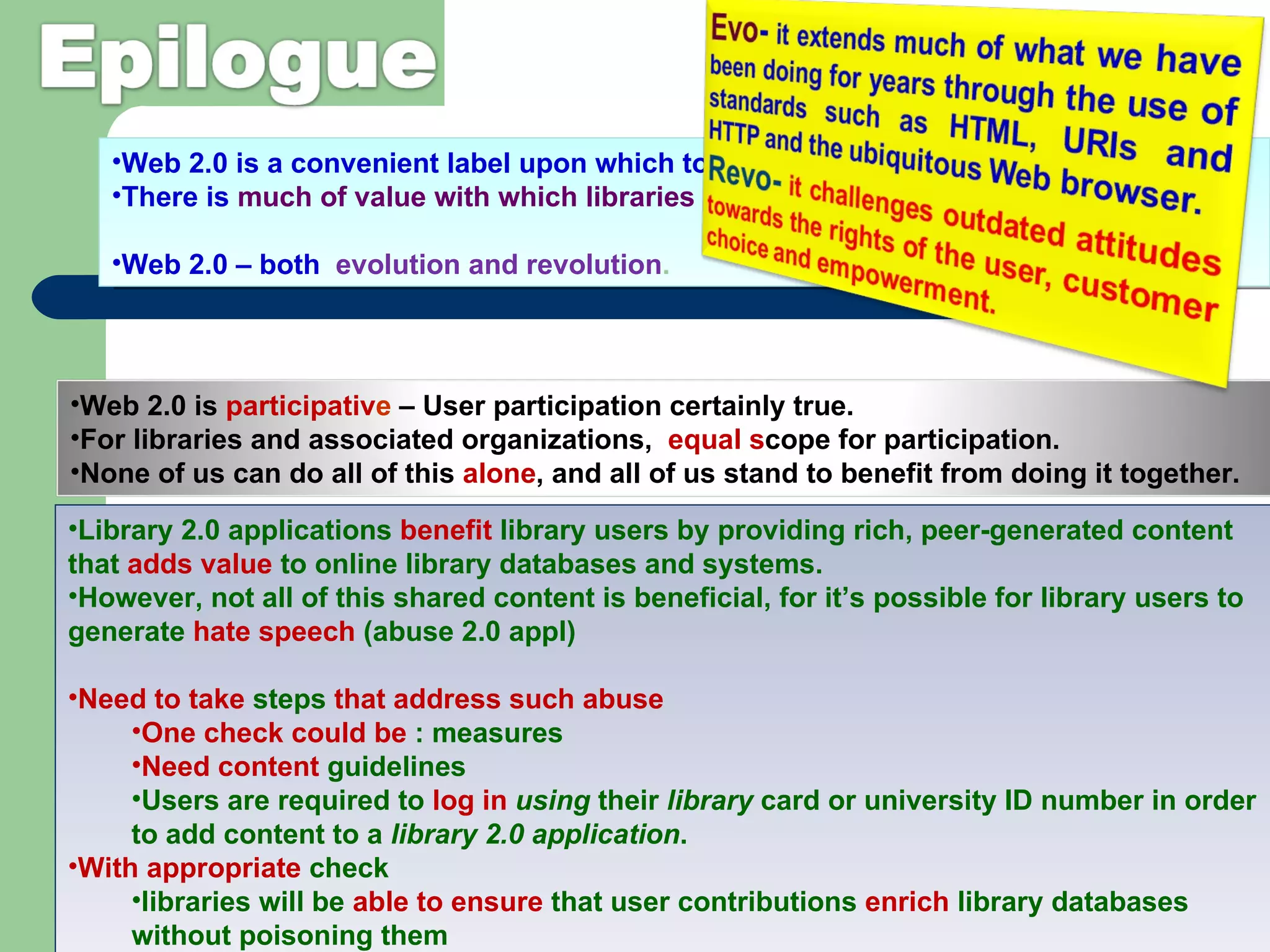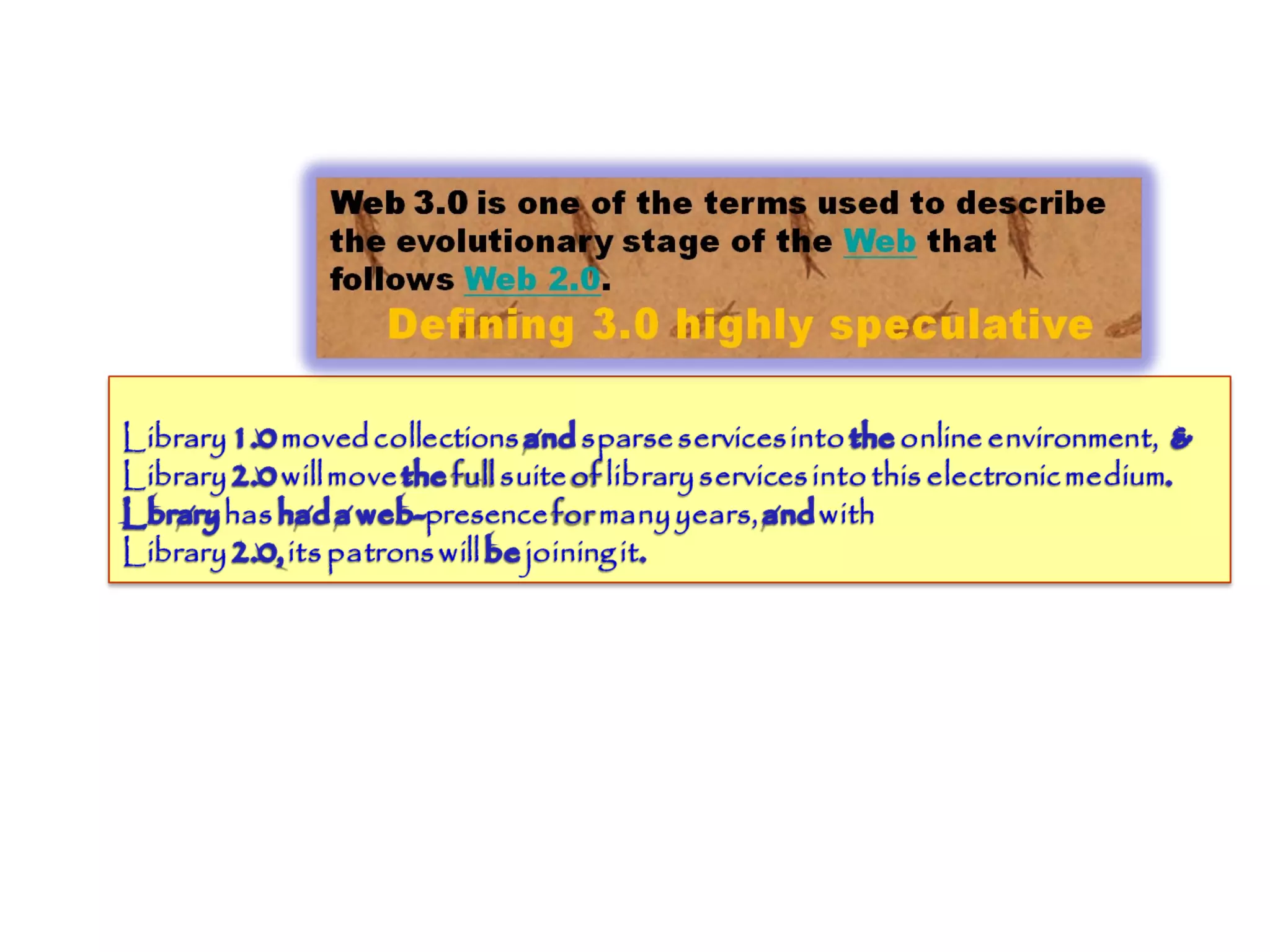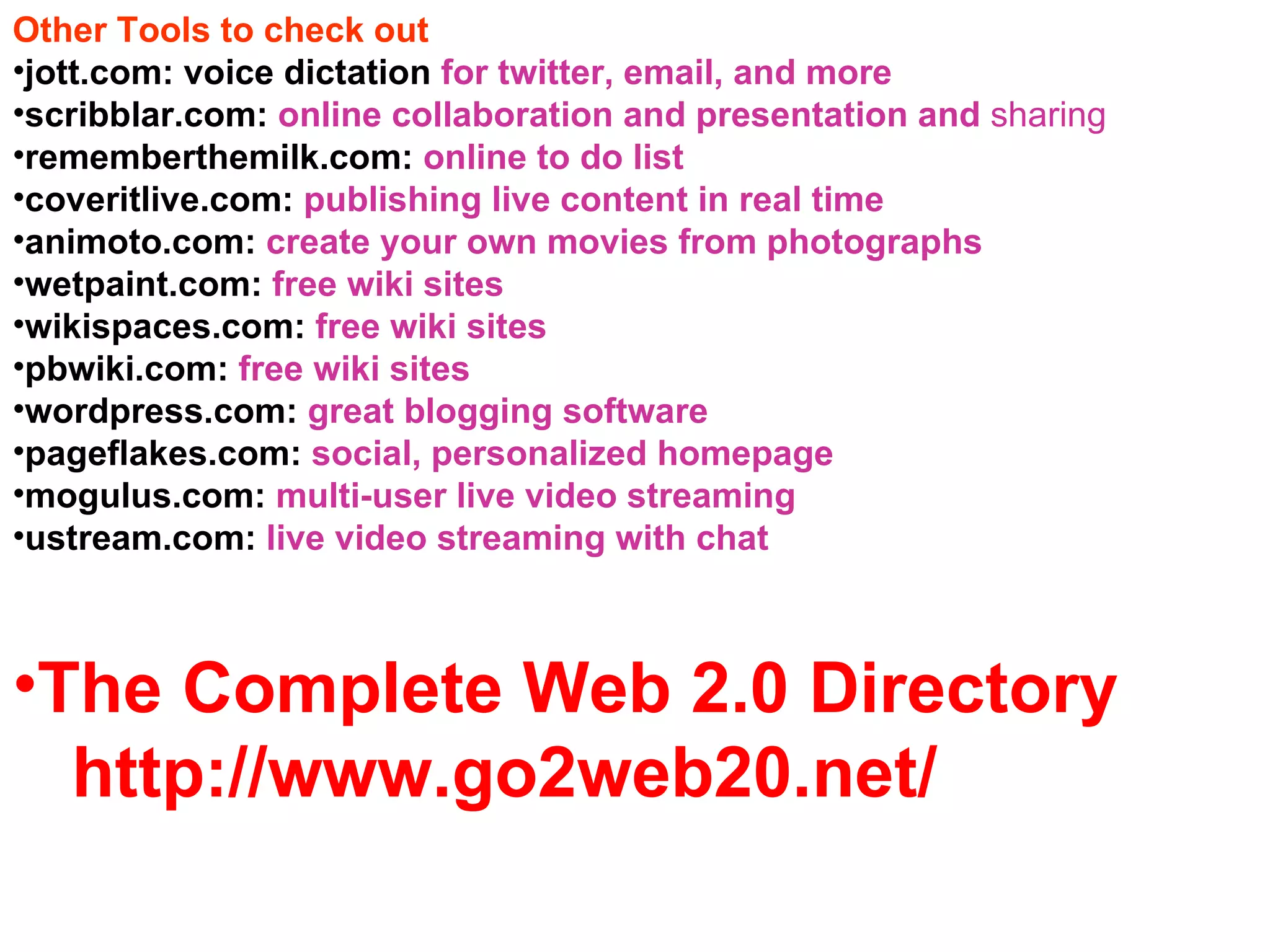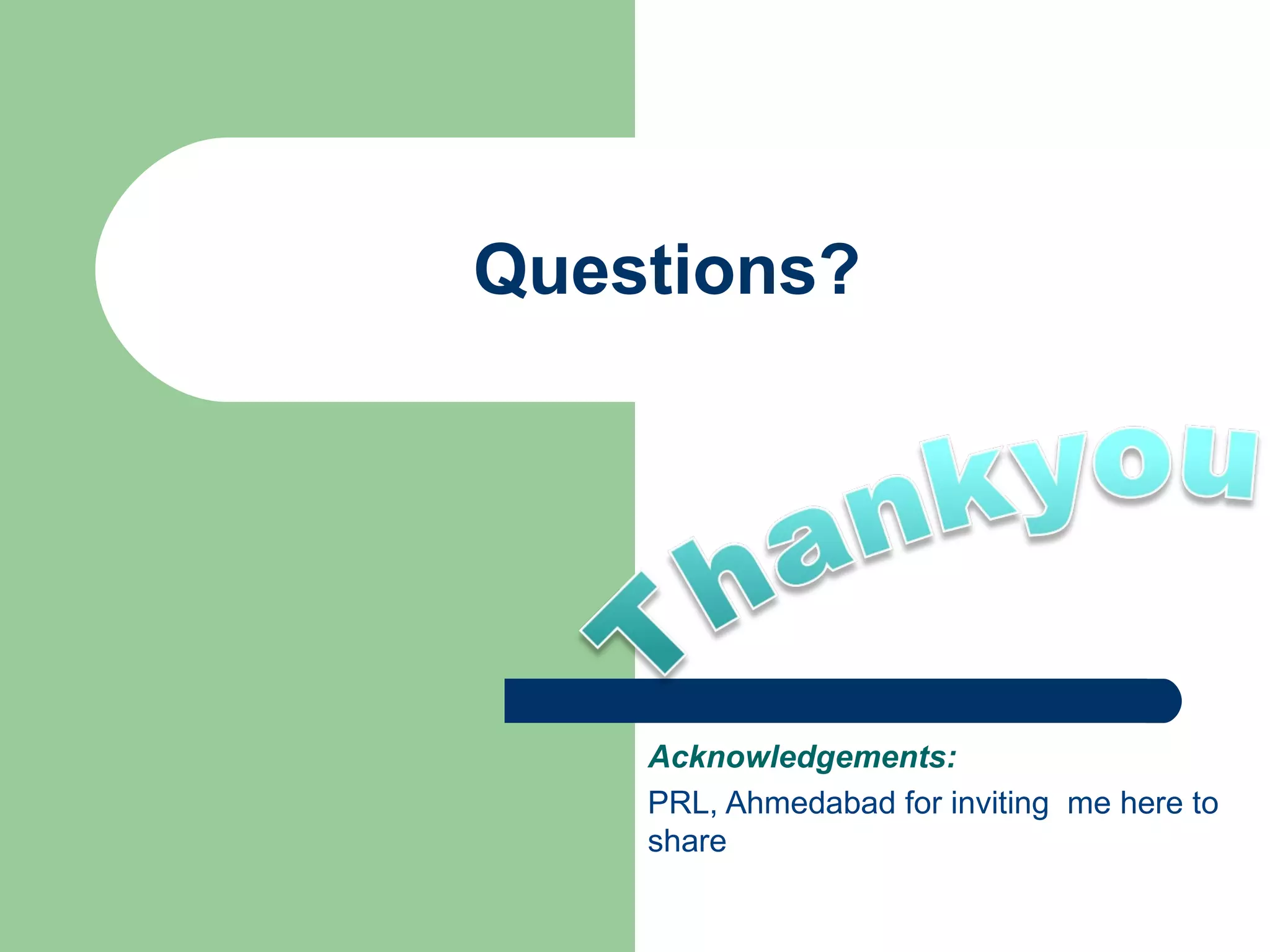The document discusses the implications of Web 2.0 technologies on library services, defining 'Library 2.0' as an application of these technologies in the library context to enhance user participation and engagement. It explores various Web 2.0 tools, like social media and collaborative platforms, and their potential transformative effects on how libraries interact with their users. The document emphasizes the importance of creating user-centered, participative library services that adapt to changing user needs and expectations.
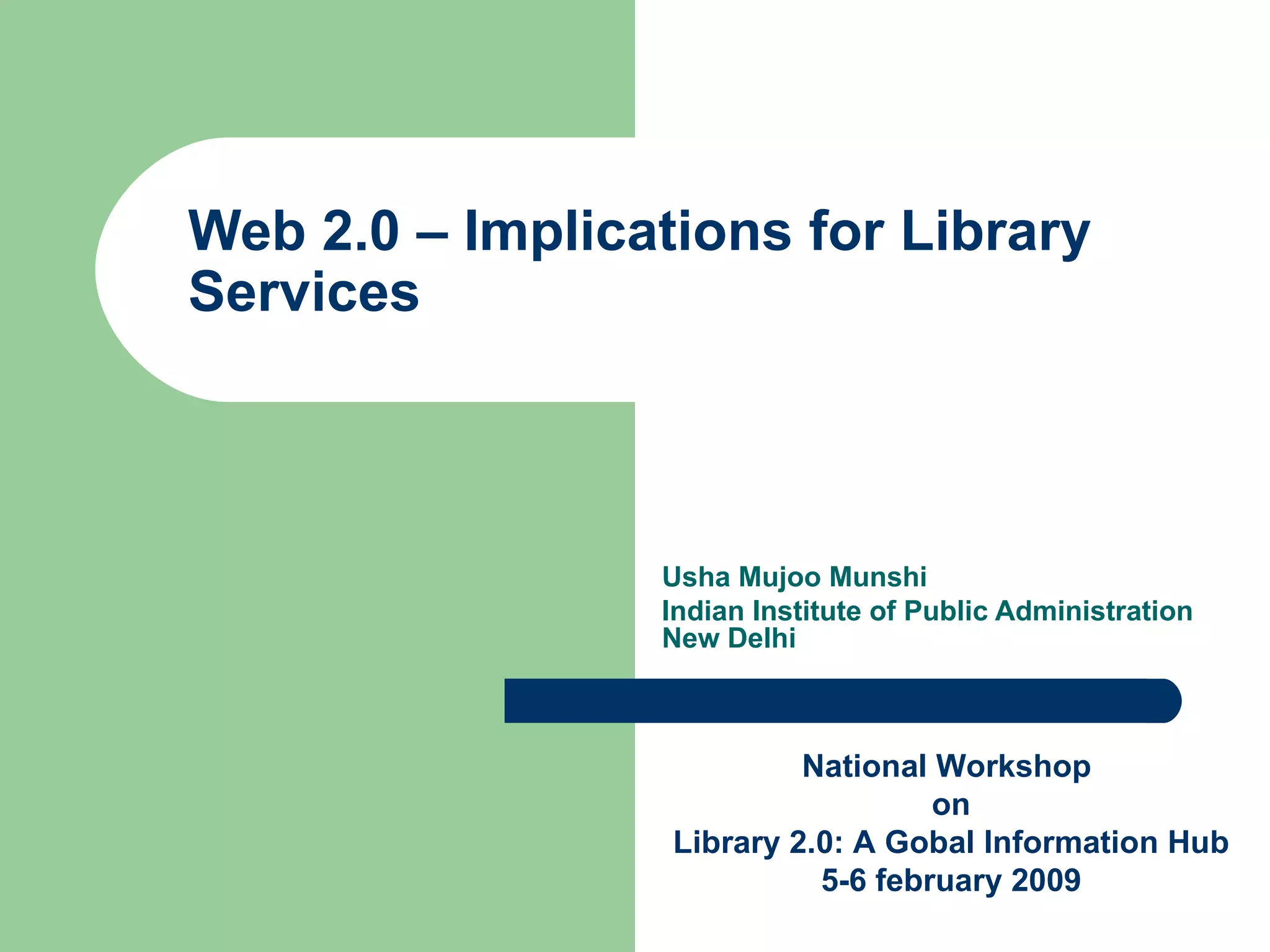
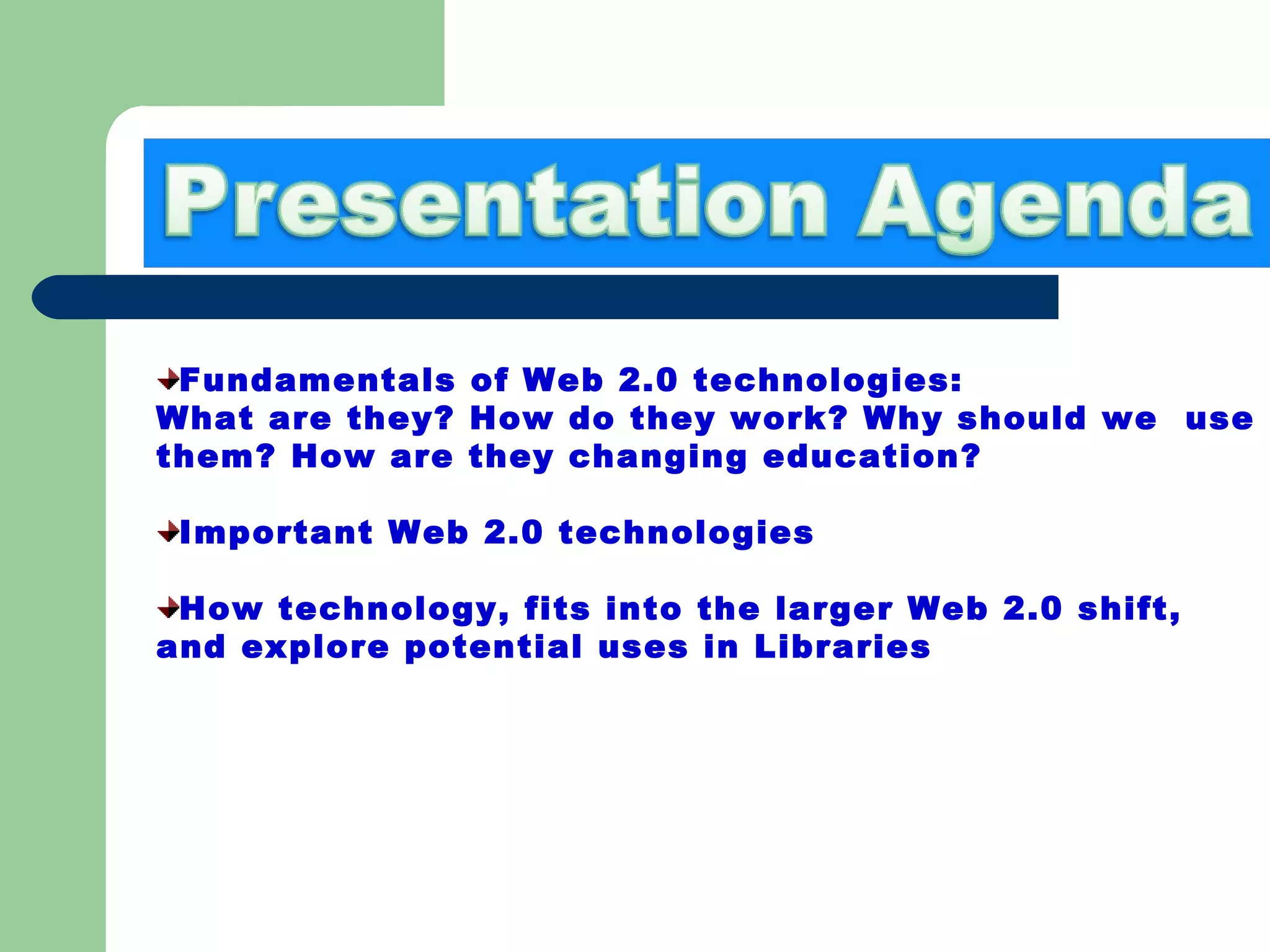
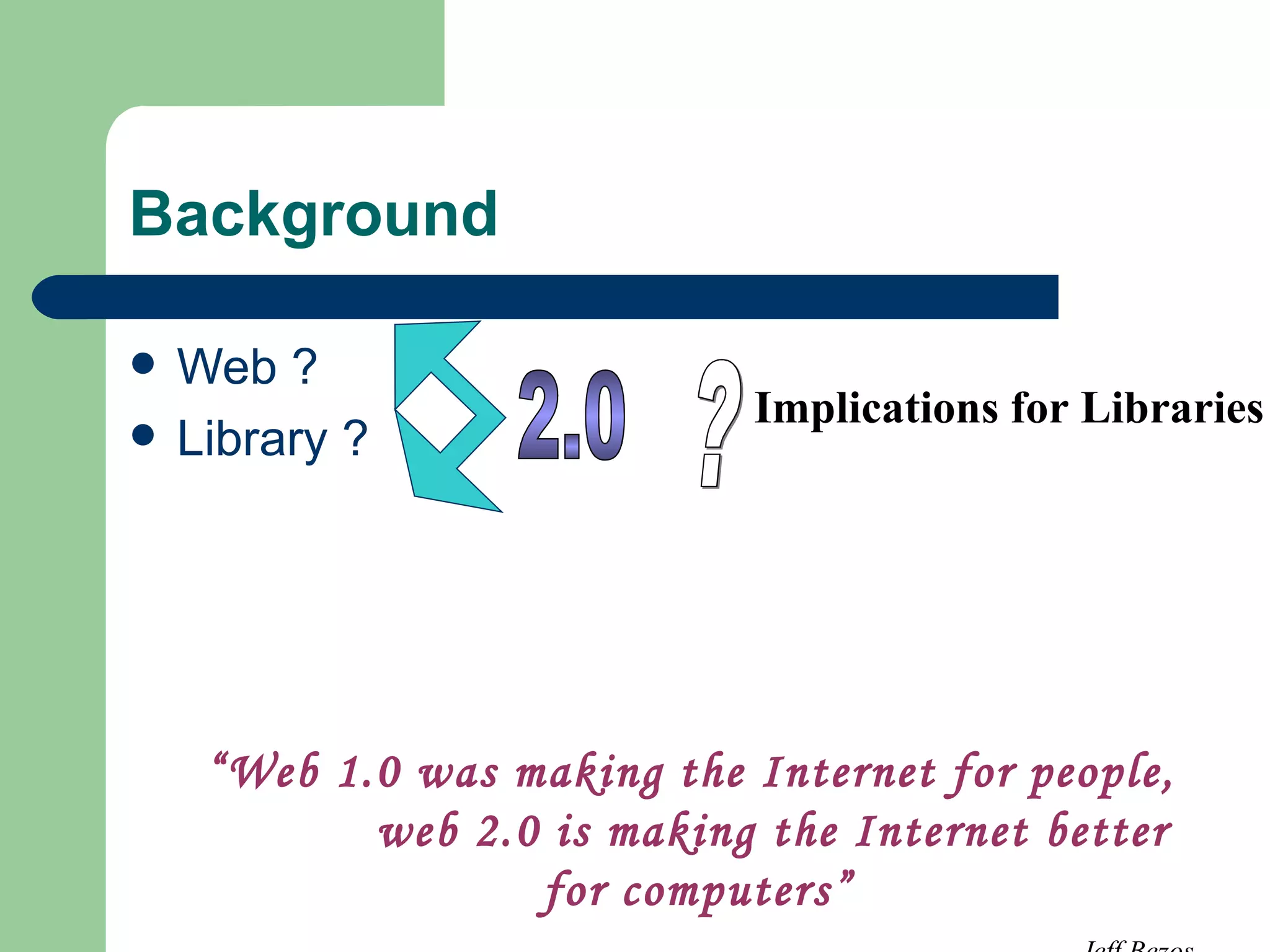
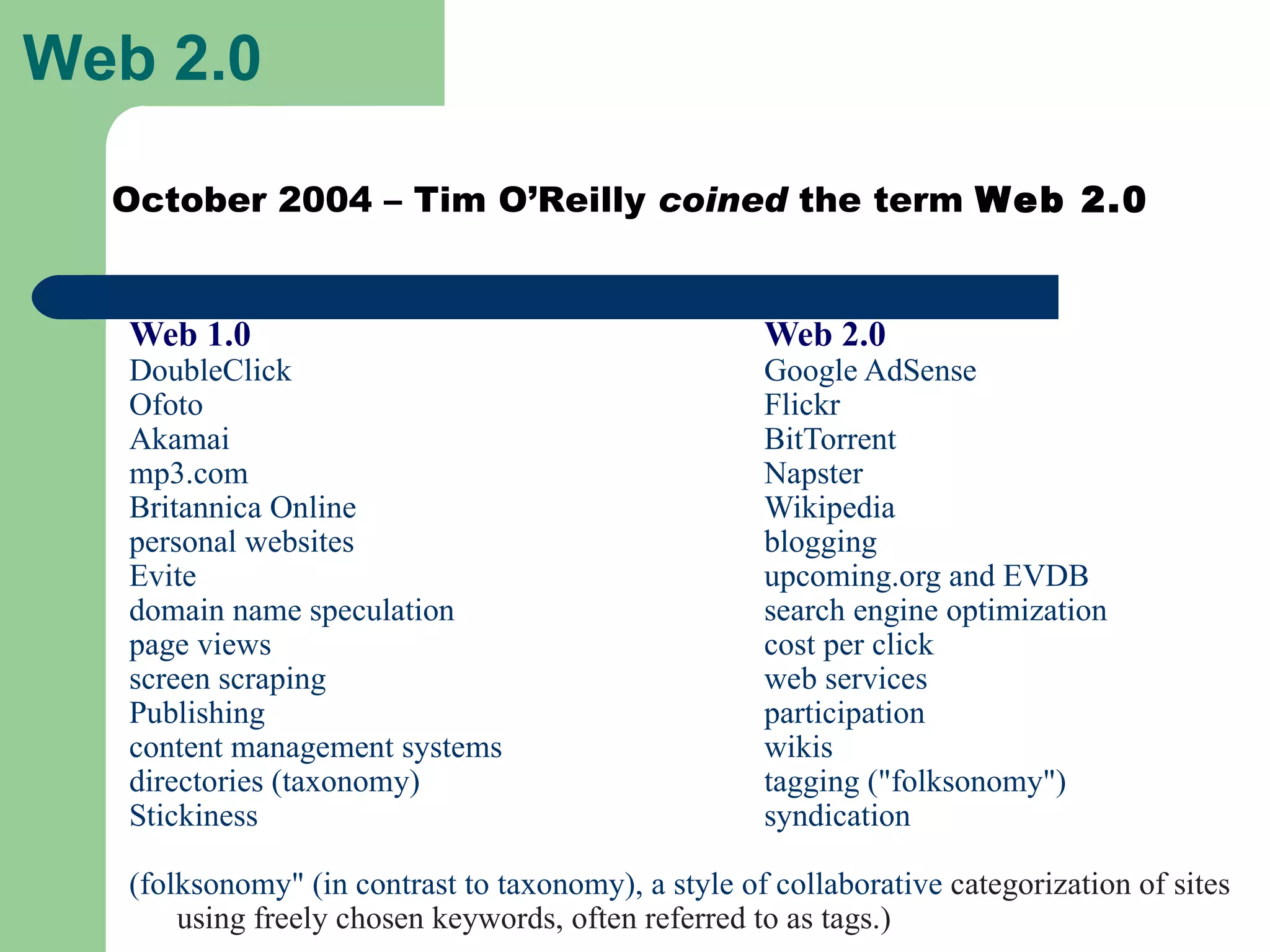
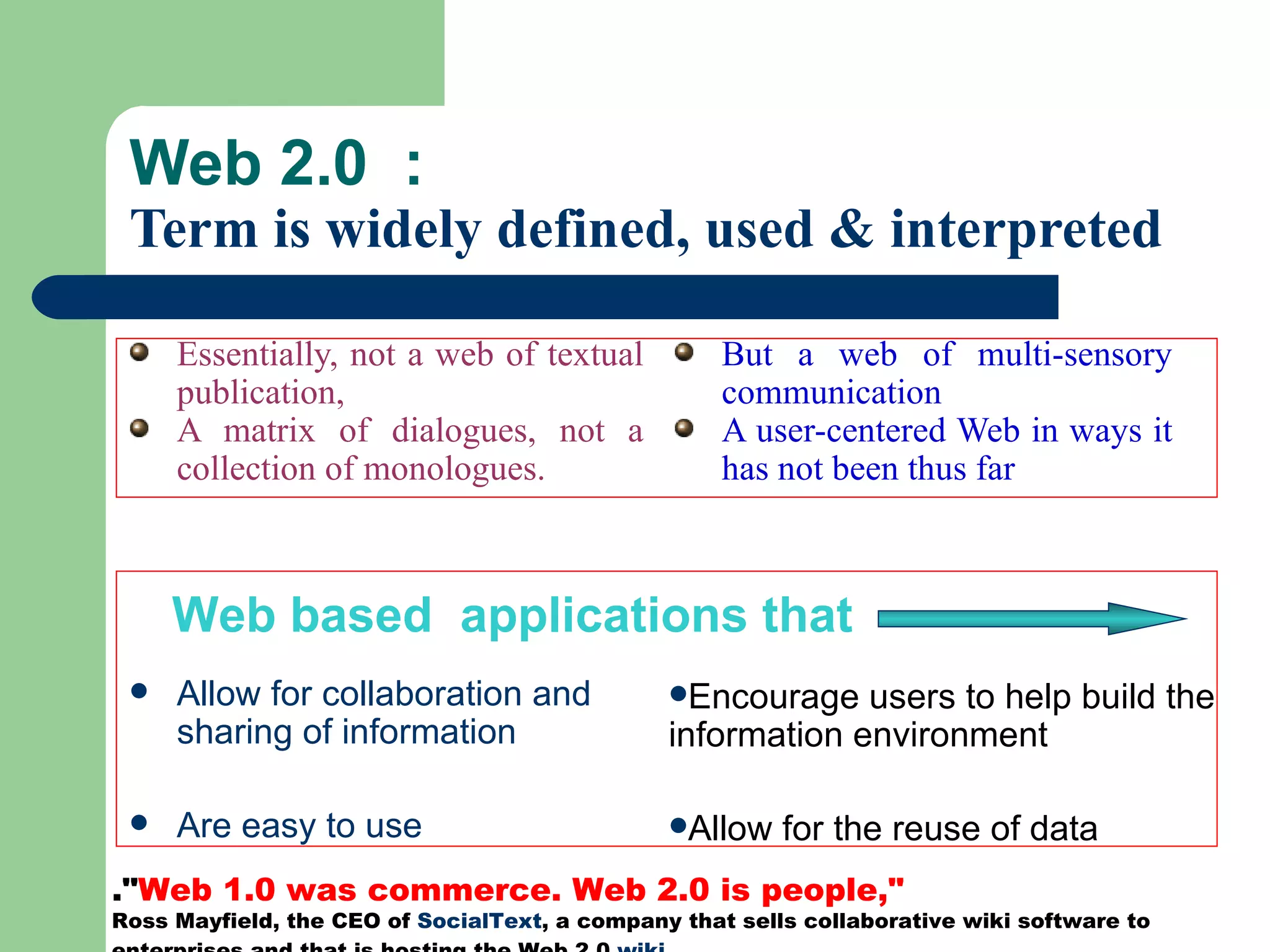
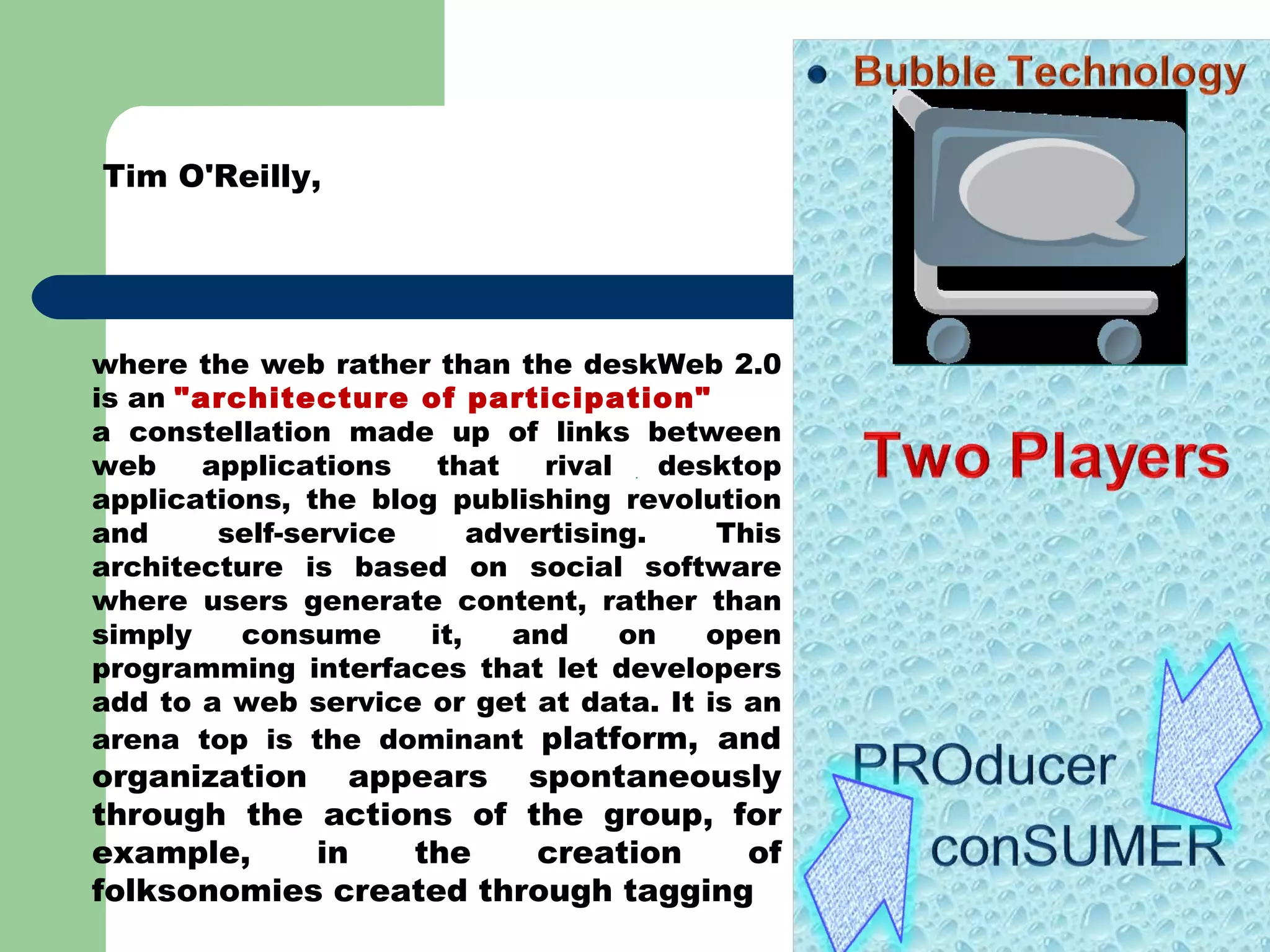
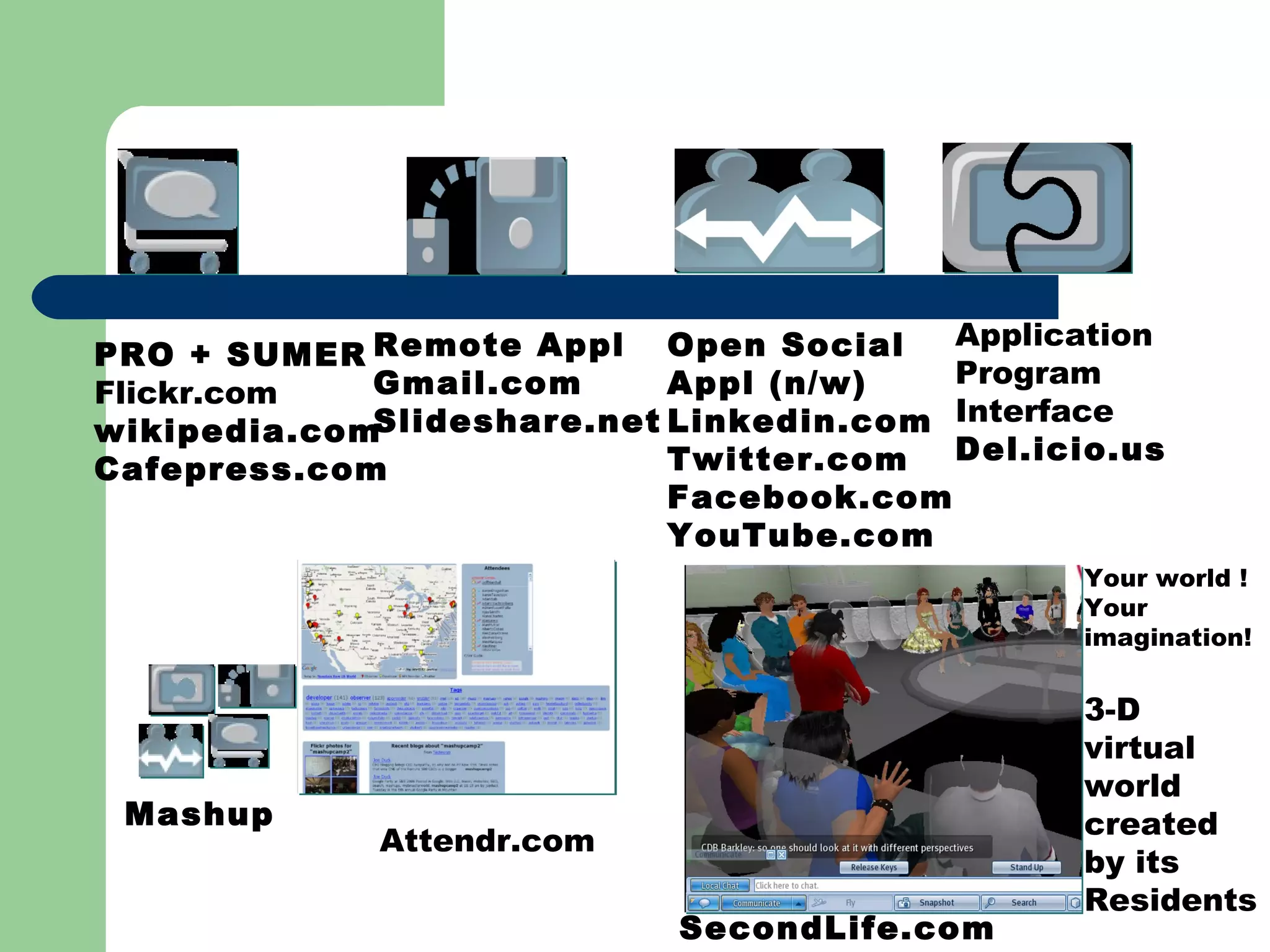
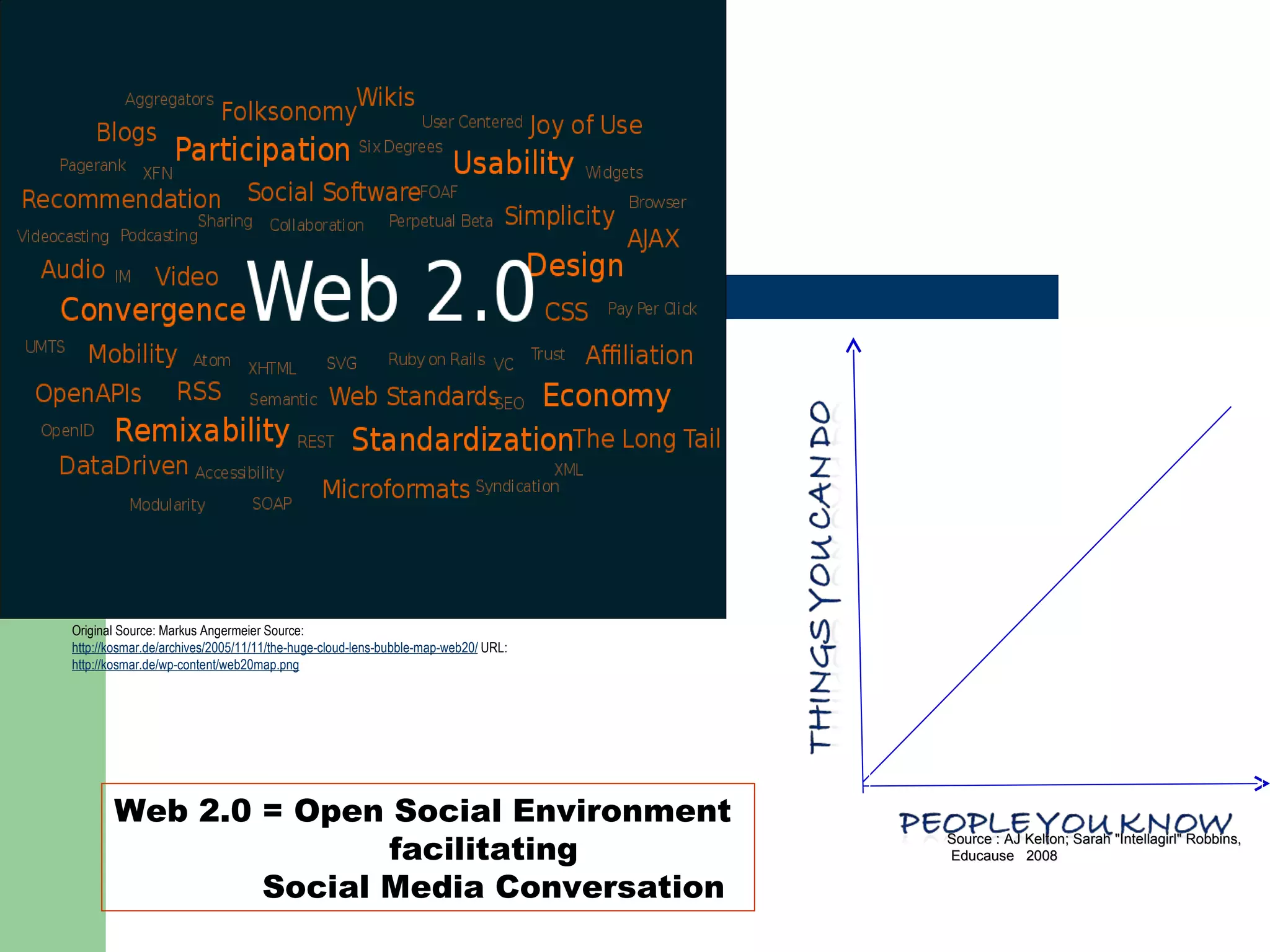
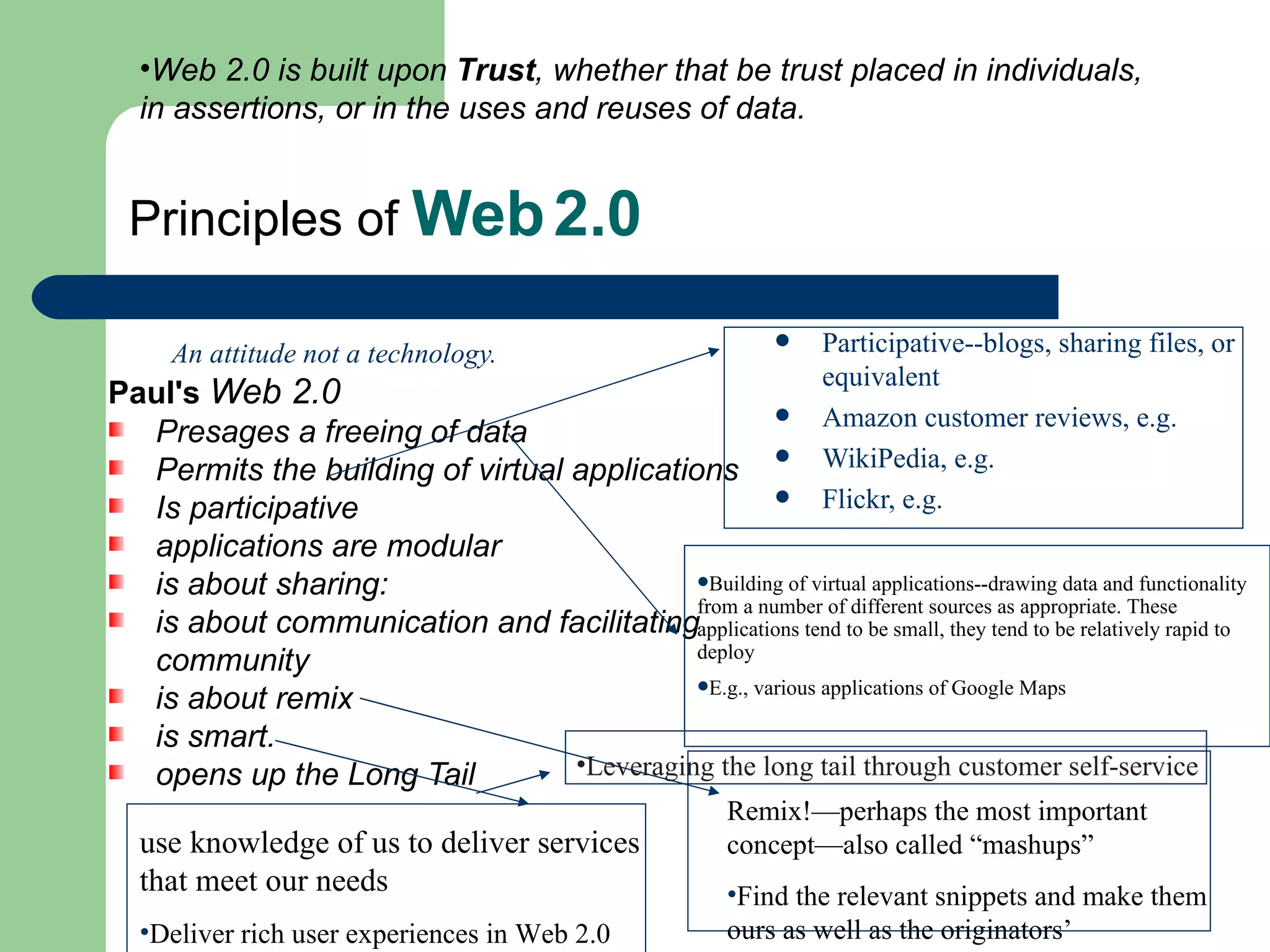
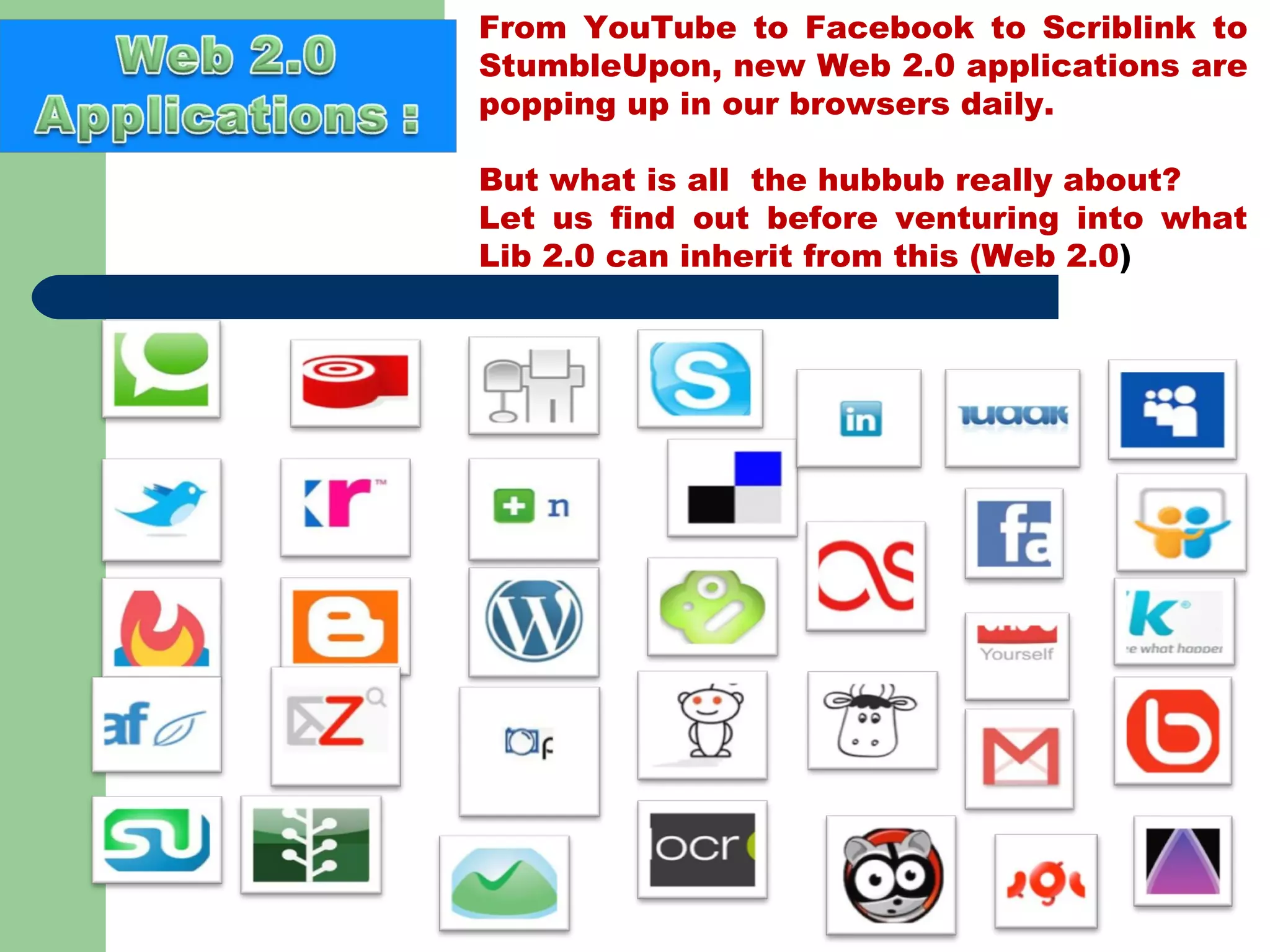
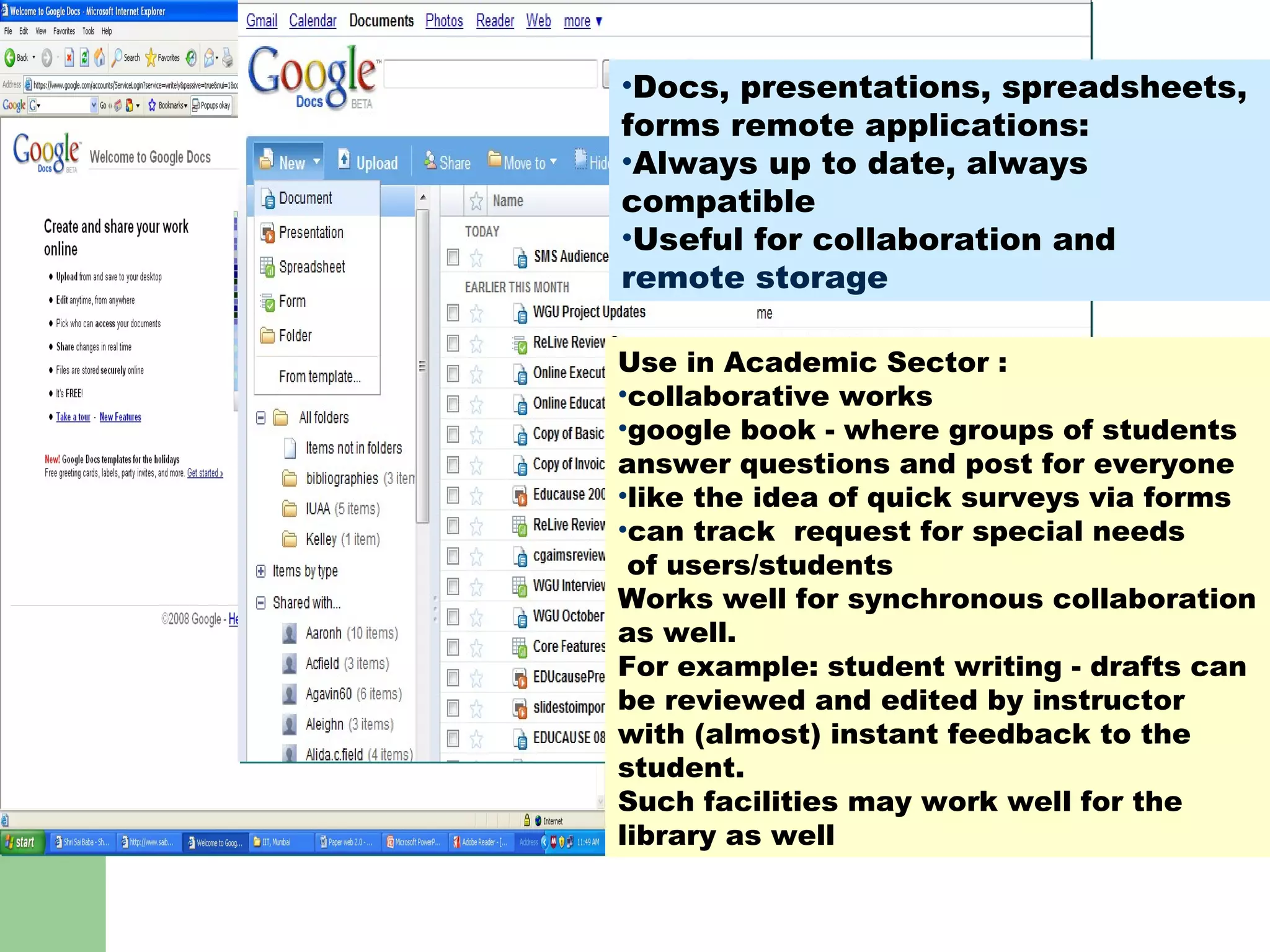
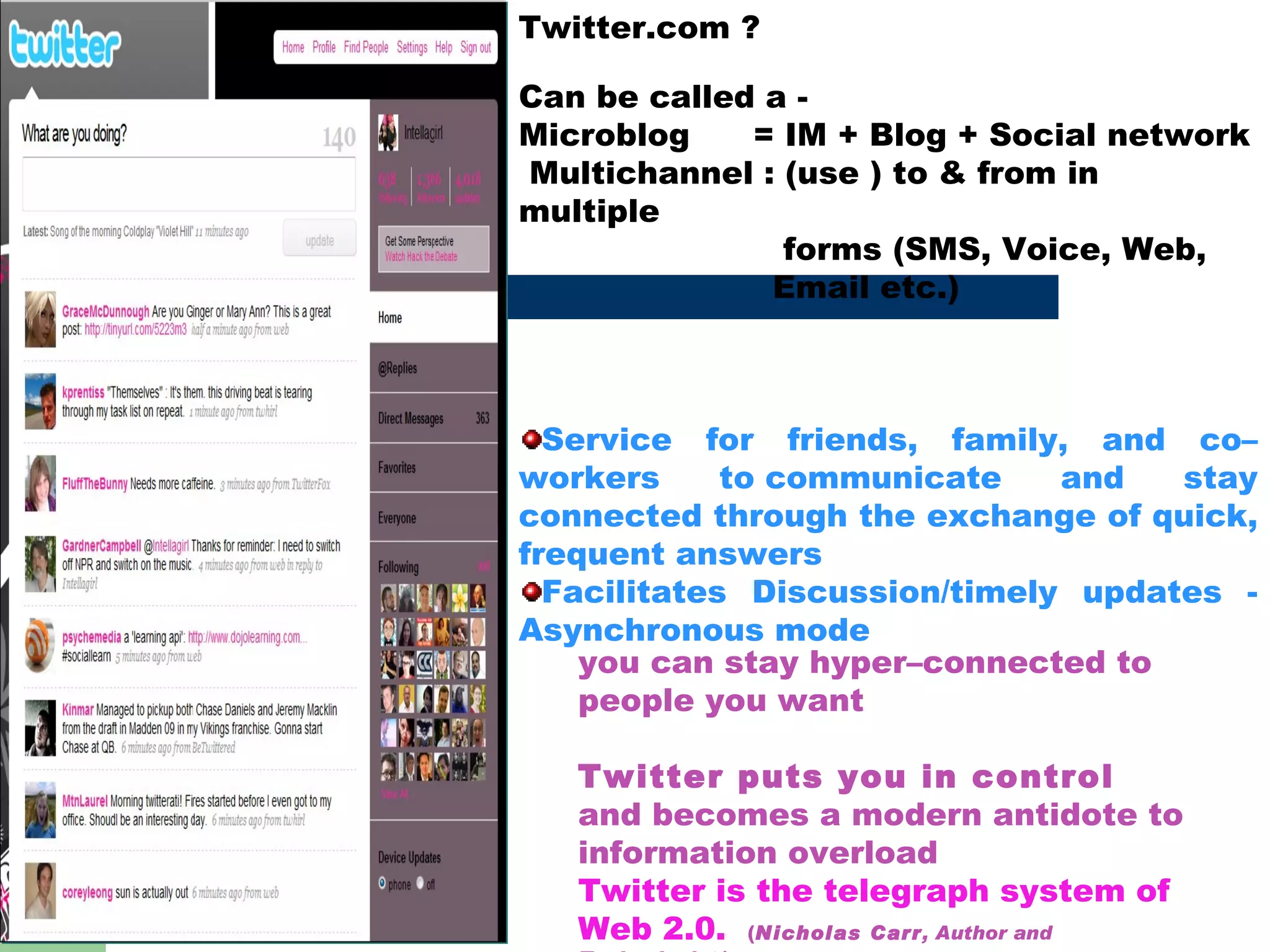
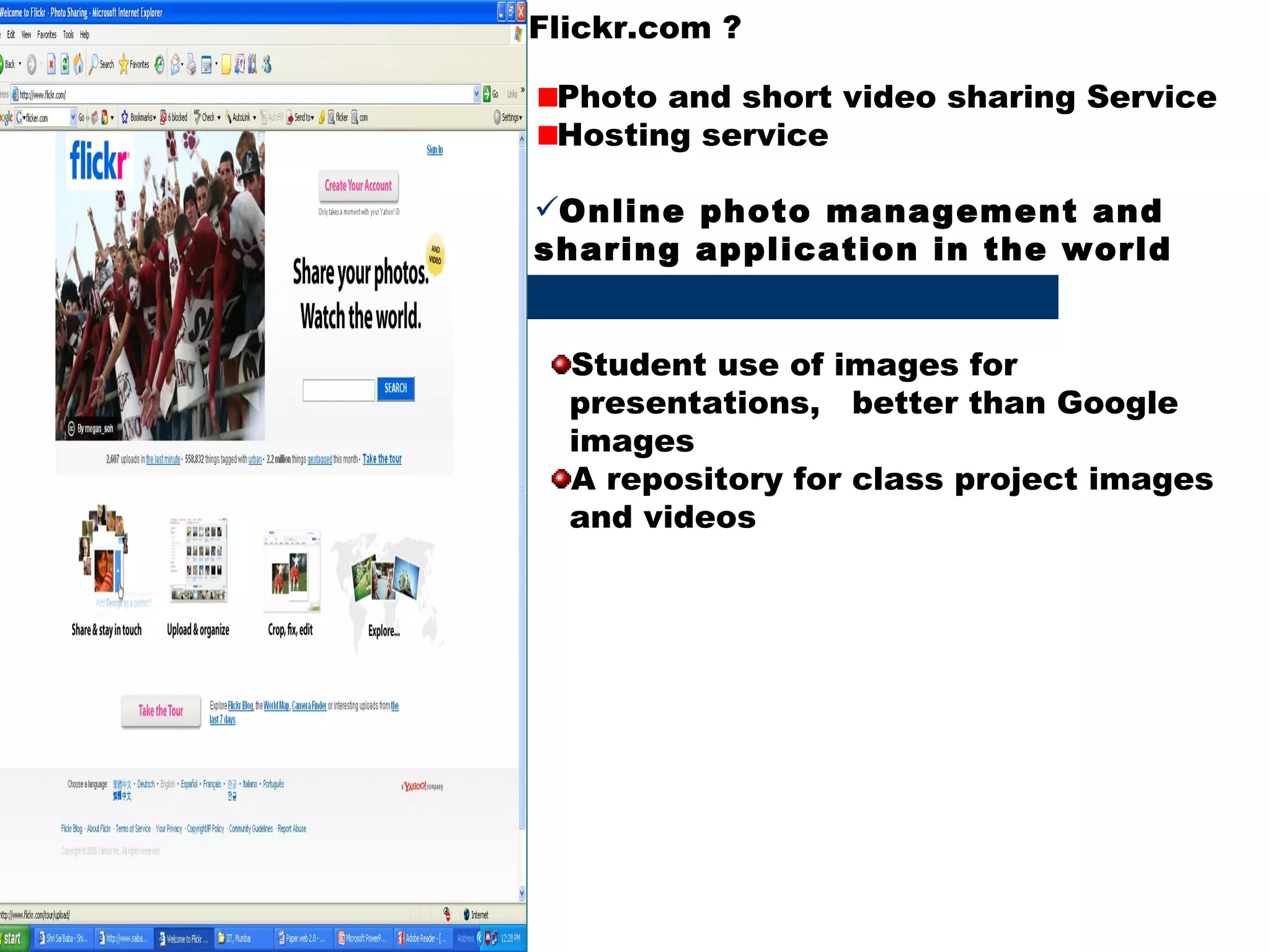
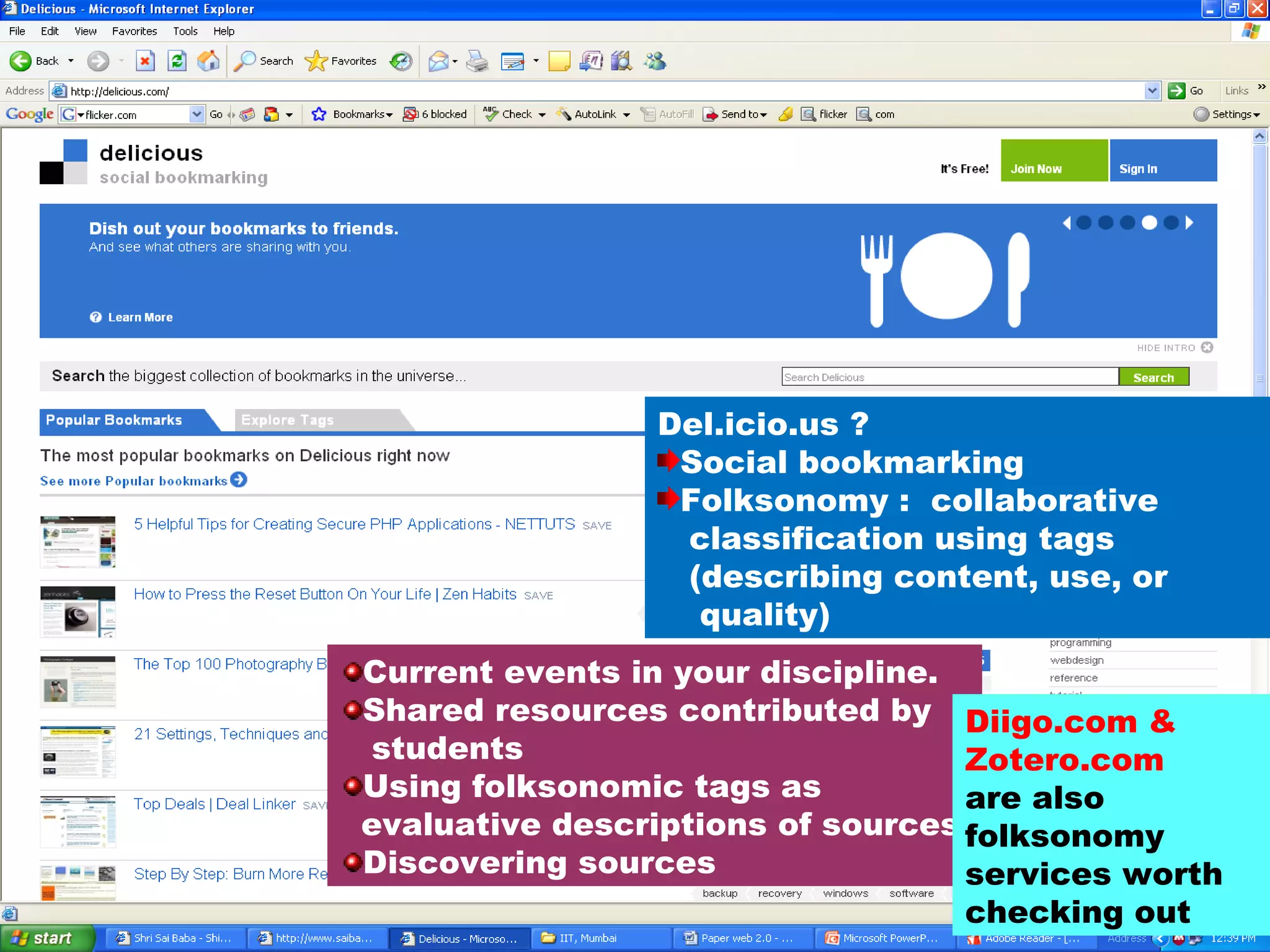
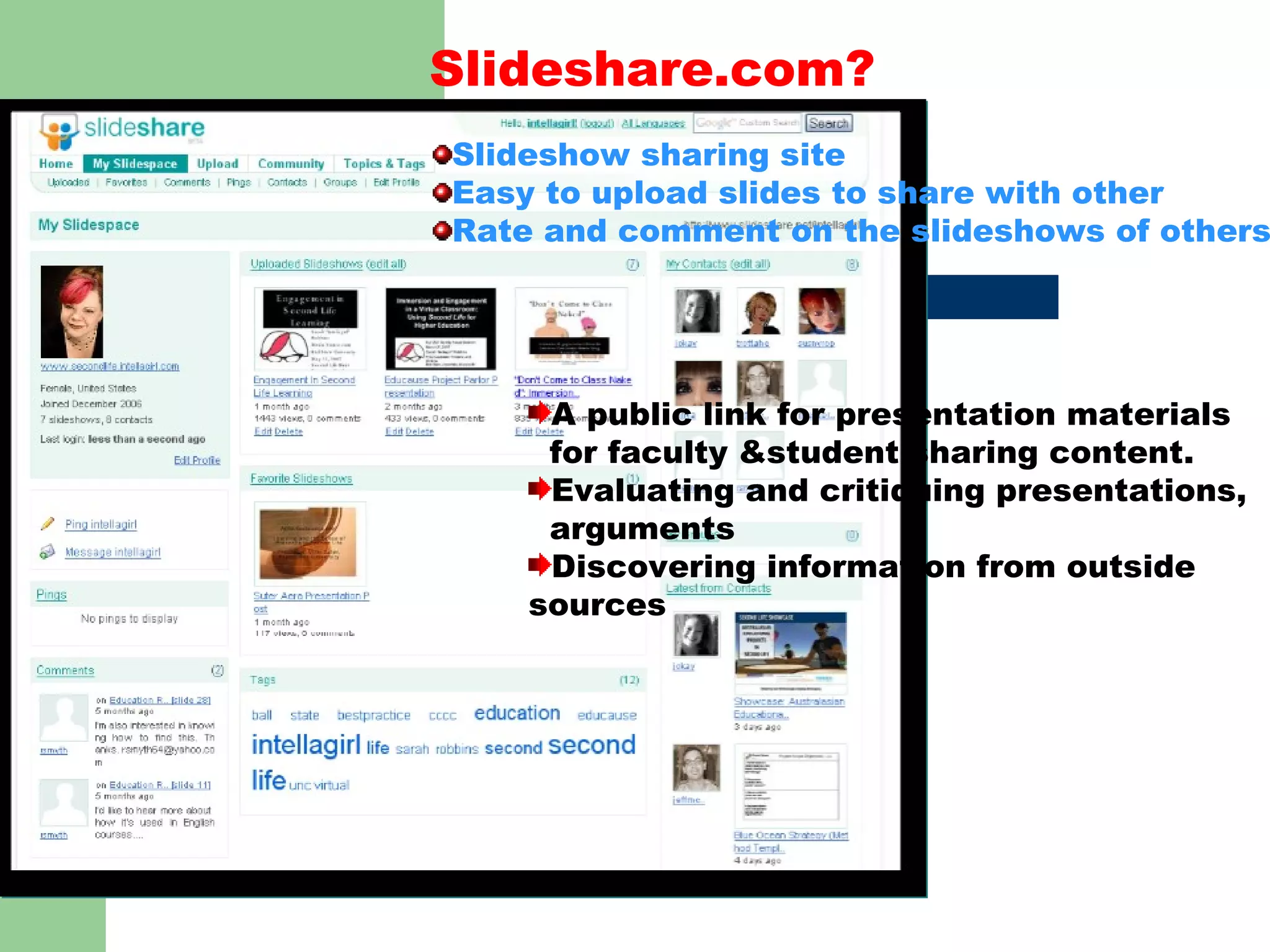
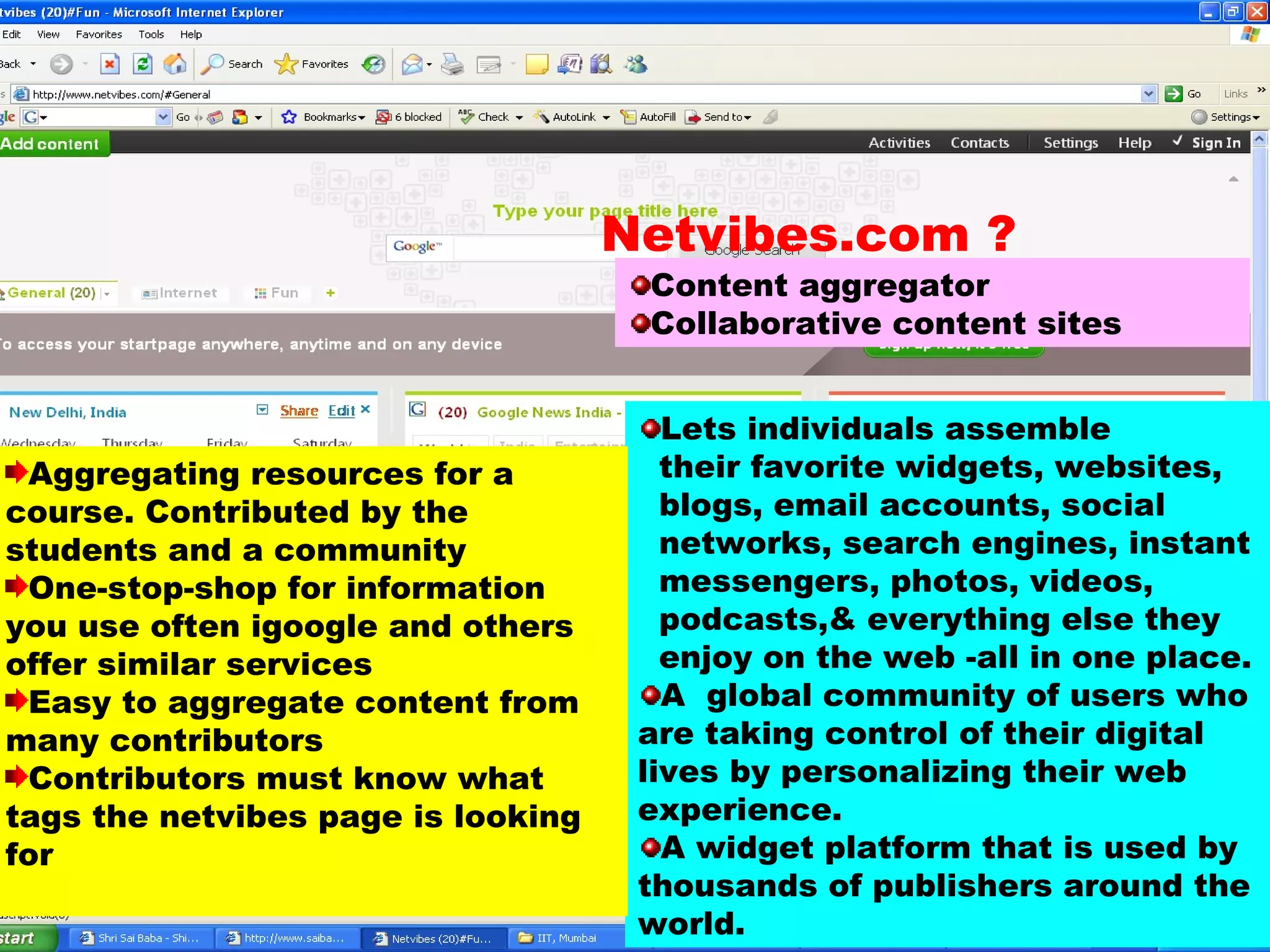
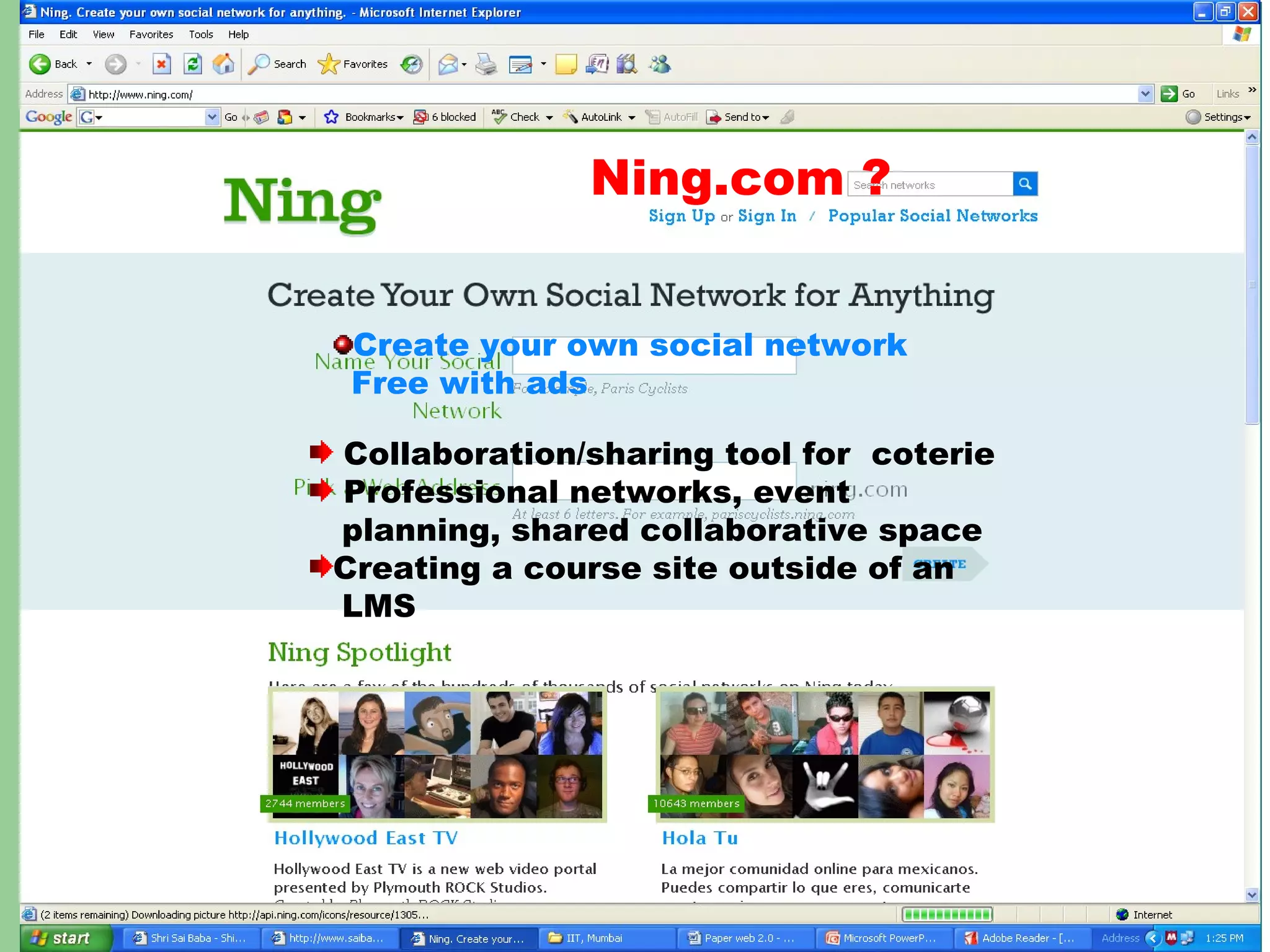
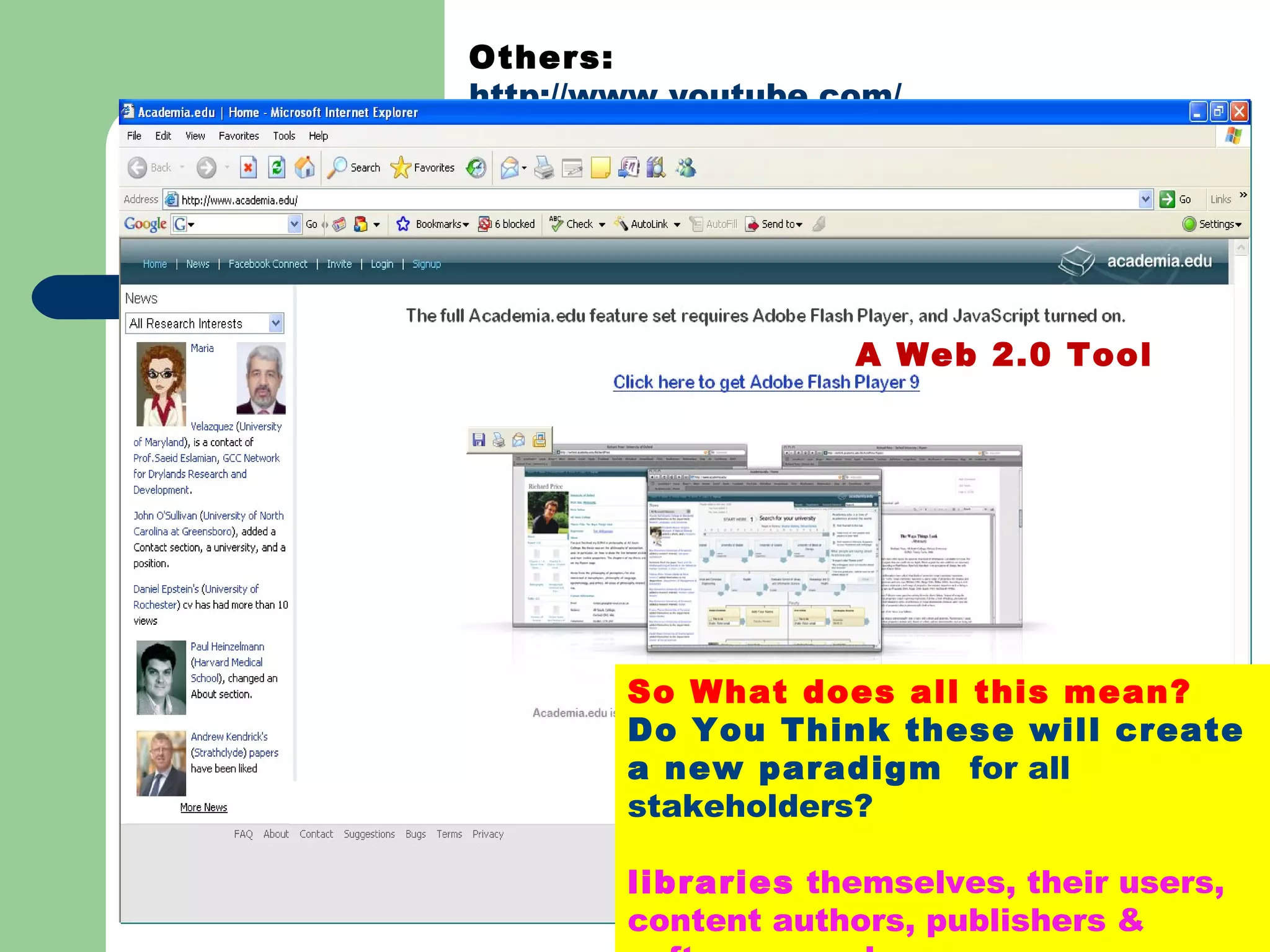
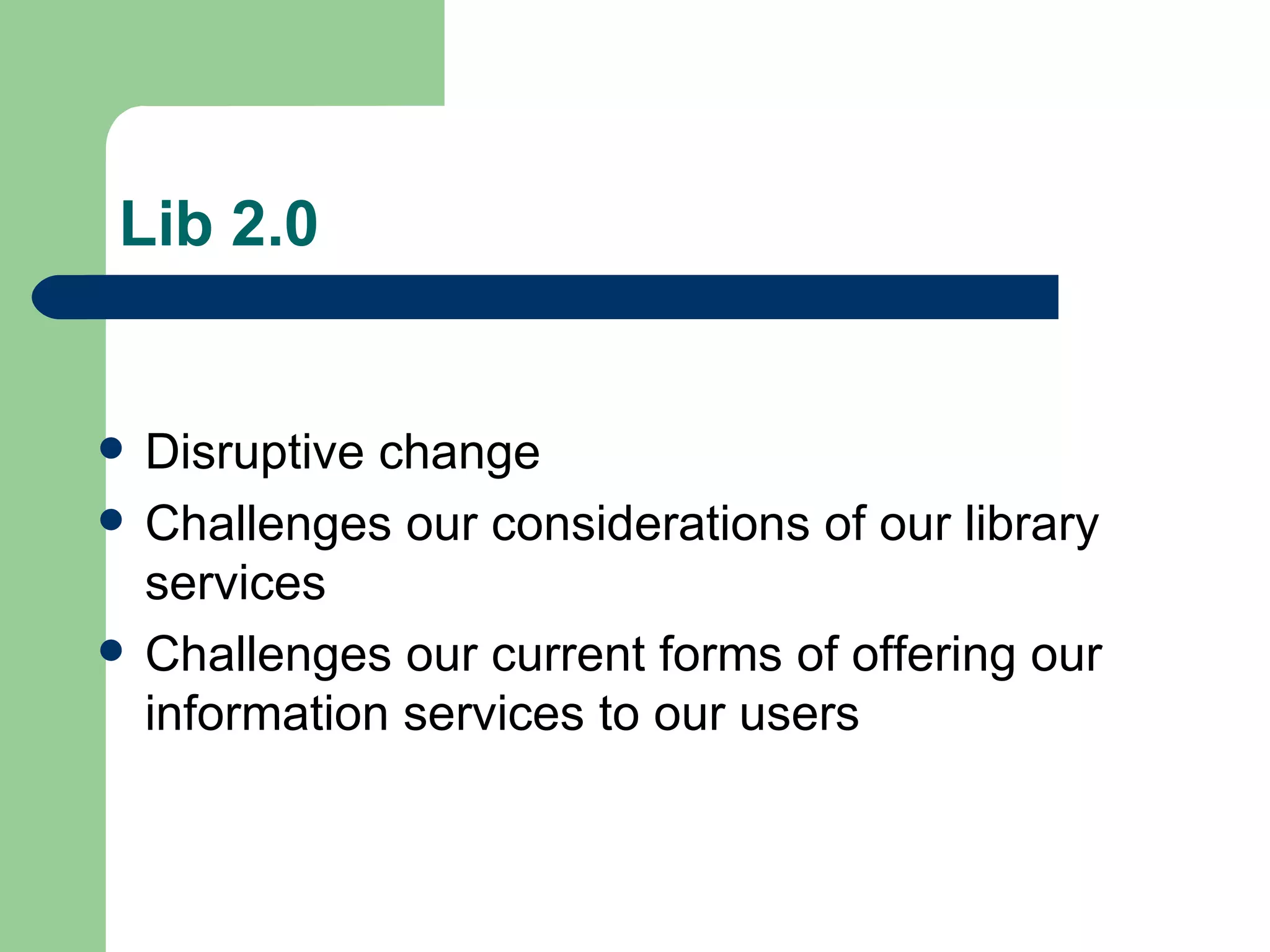
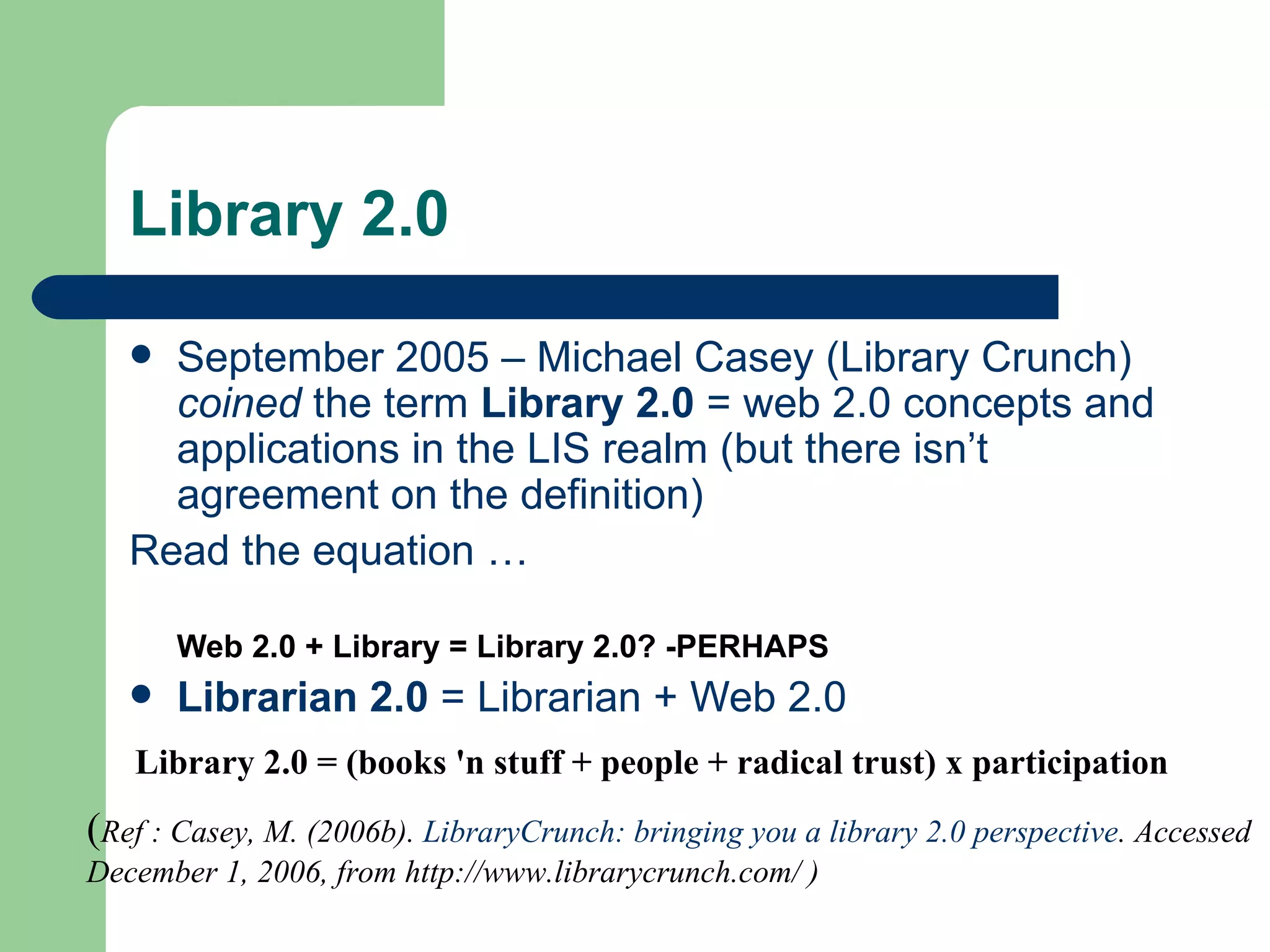
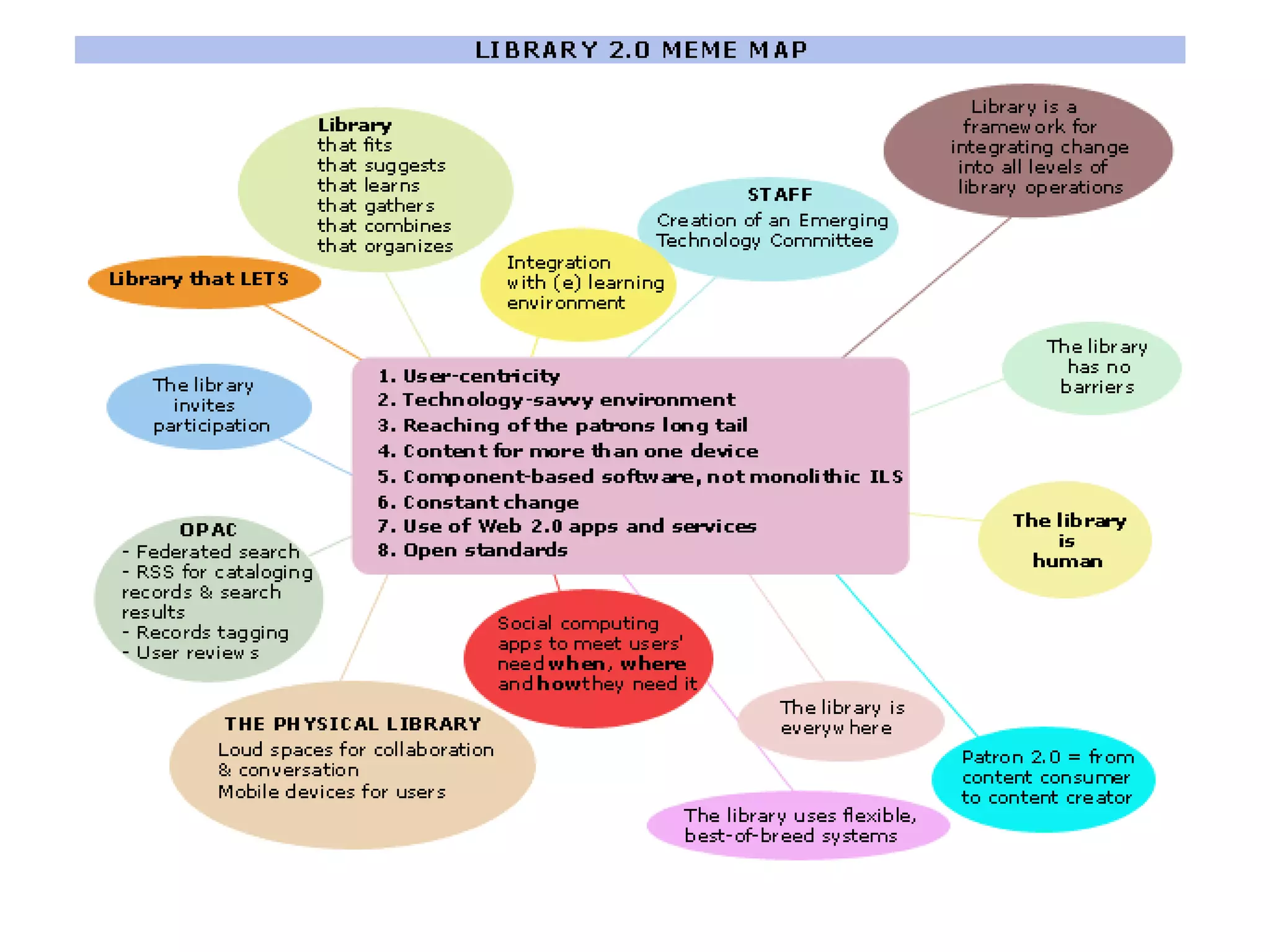
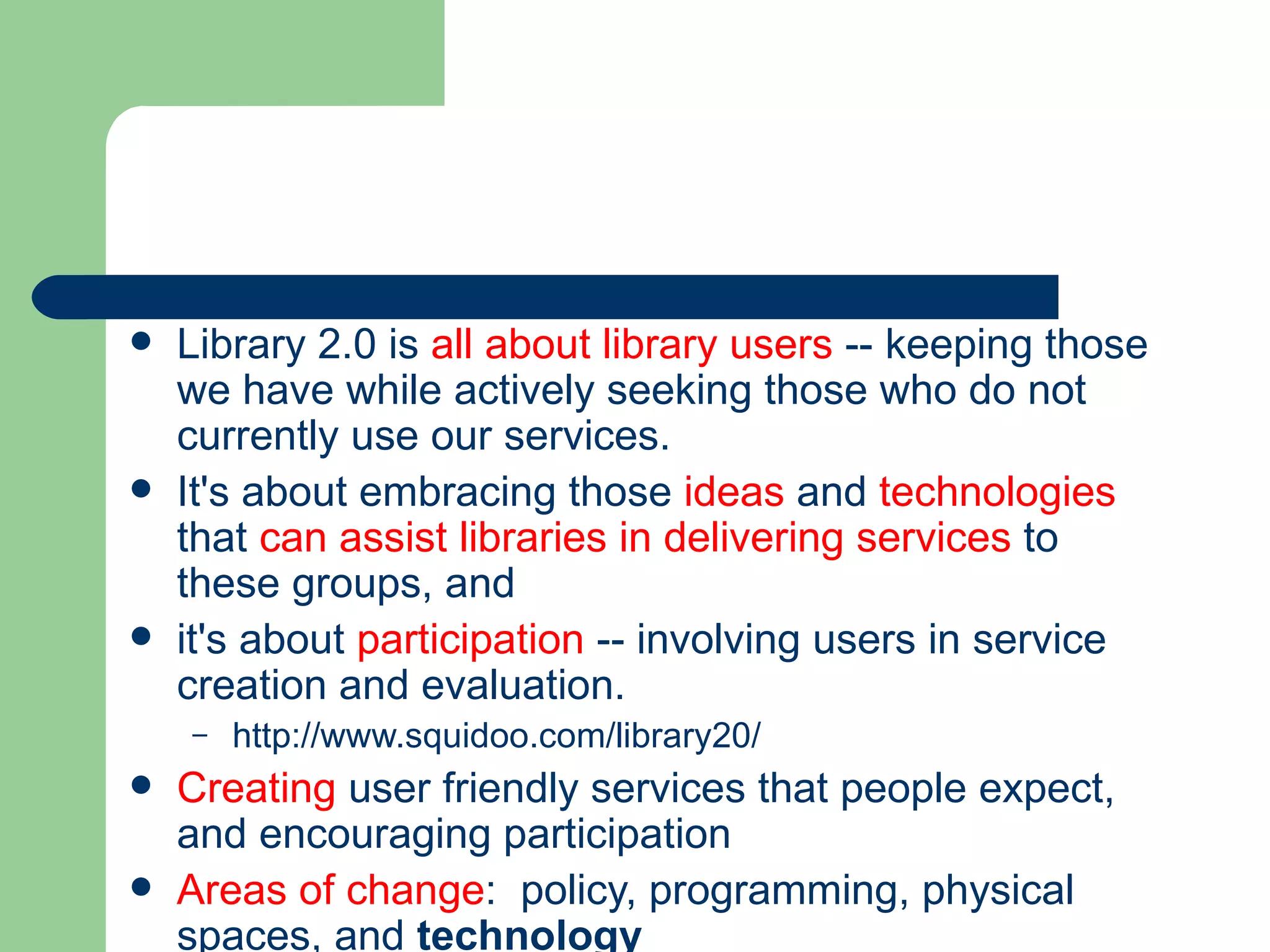
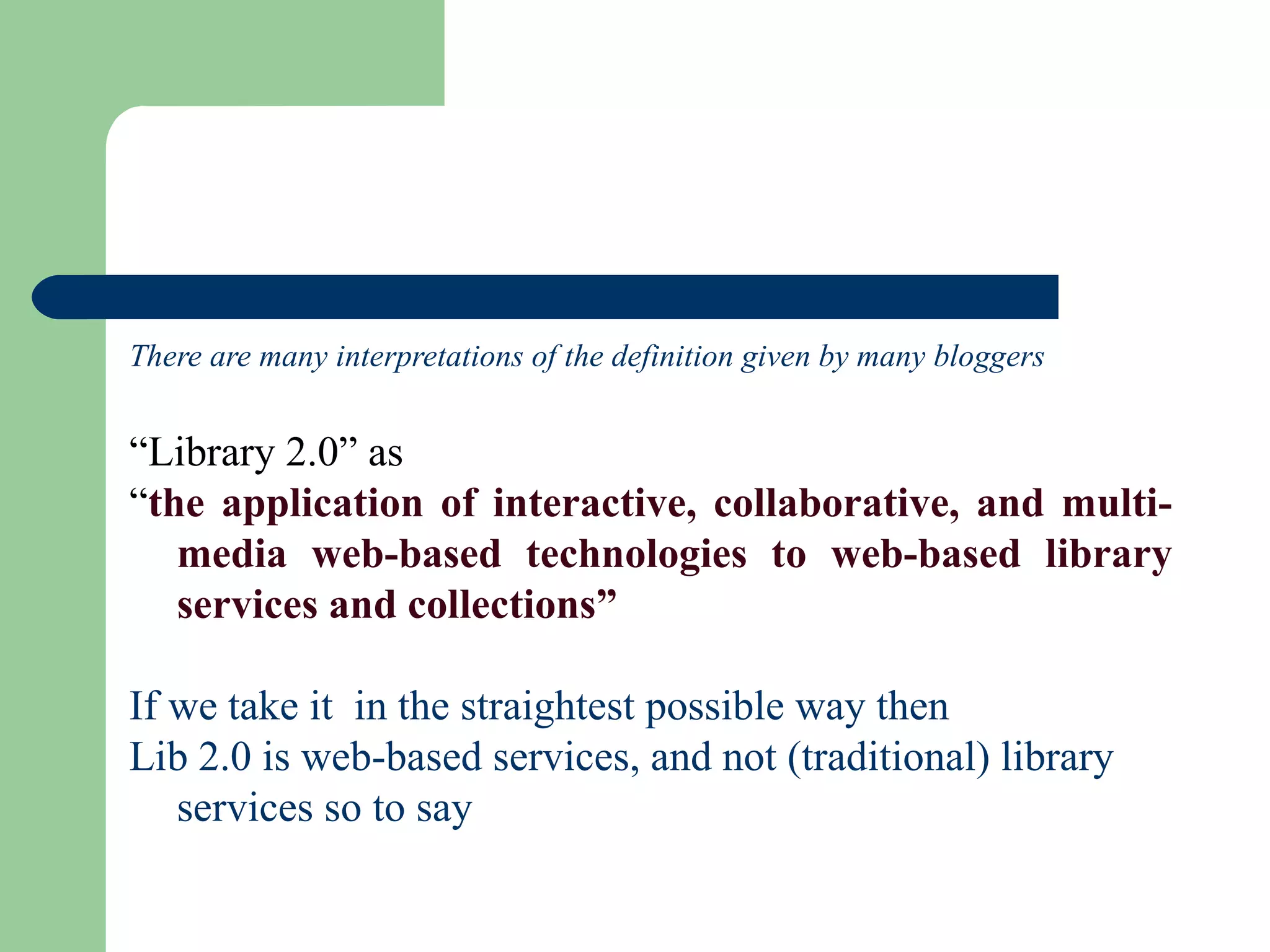
![What – How – Why (from a lib perspective) What: ILS disaggregation, recombination and integration - Make services available at the point of need rather than making users always come to the services, whether they be physical site specific or Web site specific Active Web vs Passive Web Library “take” on Web 2.0 [see Talis ] http://www.talis.com/home/ How : (open code/standards +) API, Mashups [see Programmable Web ], AJAX [see OJAX ], Greasemonkey [see LibraryThing ], Firefox Plugins [see Del.icio.us search plugins ]… Why: Putting libraries out of the walled gardens (breaking information silos) => remix content – foster user participation Early adopters: WPOPAC , ( http://www.plymouth.edu/library/opac/ ) Penn Tags (http://tags.library.upenn.edu/)](https://image.slidesharecdn.com/web-lib-20usha-munsi-1234764720128846-2/75/Web-2-0-Implications-for-Library-Services-24-2048.jpg)
![http://ojax.sourceforge.net/ OJAX –Repository metasearch tool OJAX provides a highly dynamic AJAX based user interface to a federated search service for OAI-PMH compatible repository metadata. Provide a single search interface across all the repositories in use in an institution or consortium. Or provide an improved search interface to a single repository Faster resource discovery. Easy to use, and support. Auto-completion of search terms Triggering of auto-searches see OJAX in action. I http:// ojax .sourceforge.net/demo.html - Ajax , or AJAX (asynchronous JavaScript and XML ), is a group of interrelated web development techniques used for creating interactive web applications or rich Internet applications . With Ajax, web applications can retrieve data from the server asynchronously in the background without interfering with the display and behavior of the existing page. Ajax has gained the recent trend of interactive animation. Data is retrieved using the XML Http Request object or through the use of Remote Scripting in browsers that do not support it. Despite the name, the use of JavaScript and XML is not required, and they do not have to be used asynchronously. [3]](https://image.slidesharecdn.com/web-lib-20usha-munsi-1234764720128846-2/75/Web-2-0-Implications-for-Library-Services-25-2048.jpg)
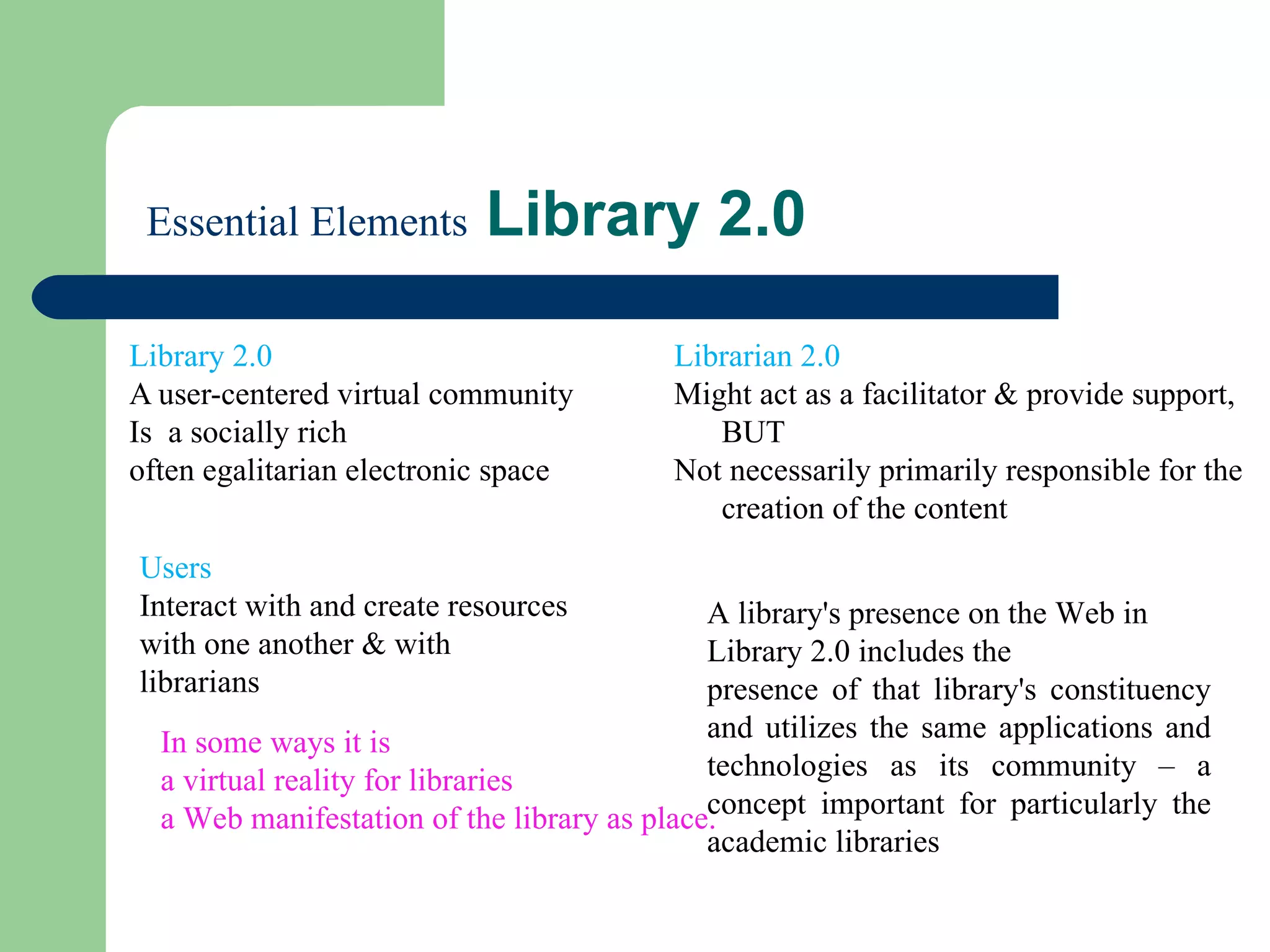
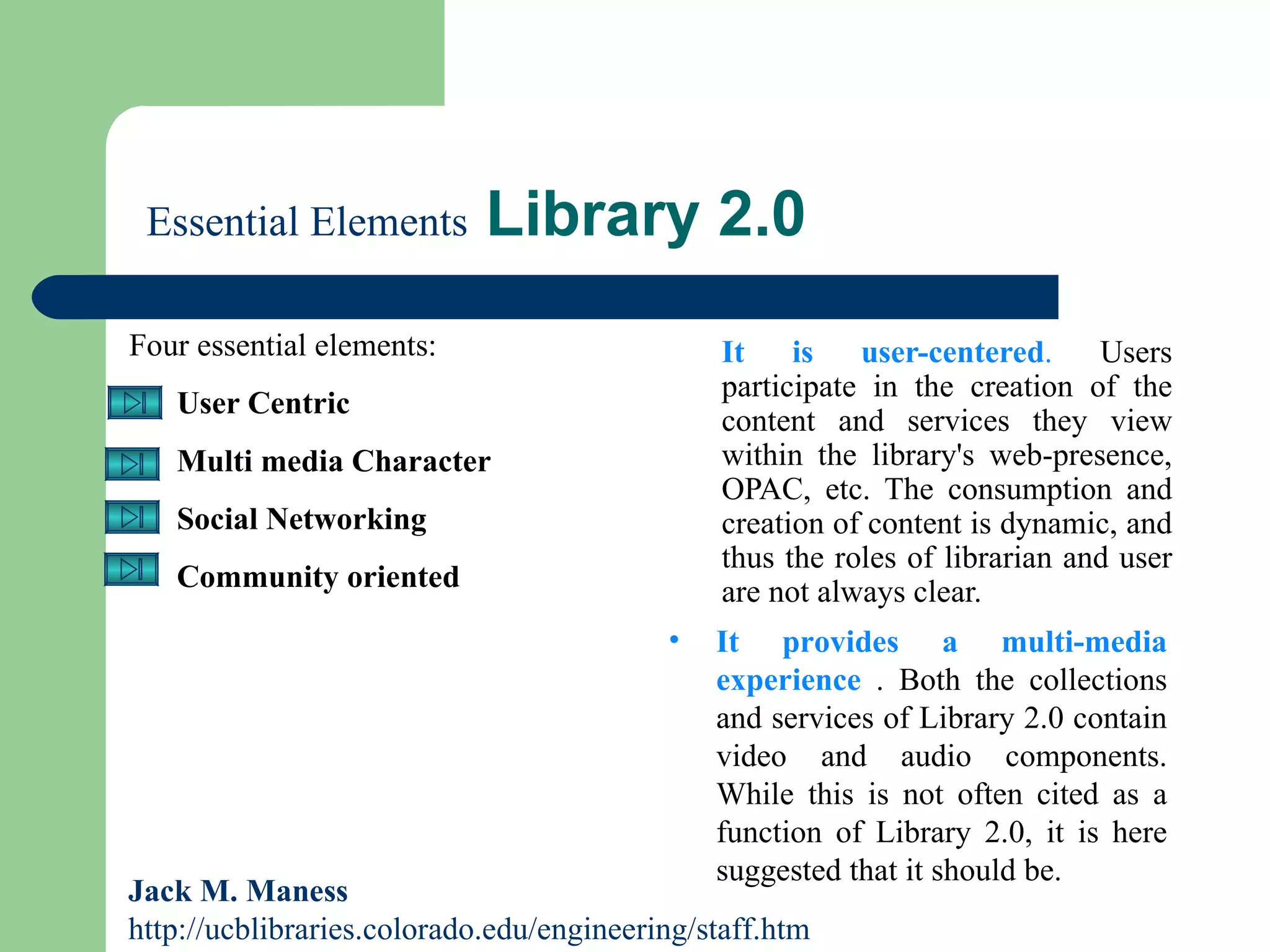
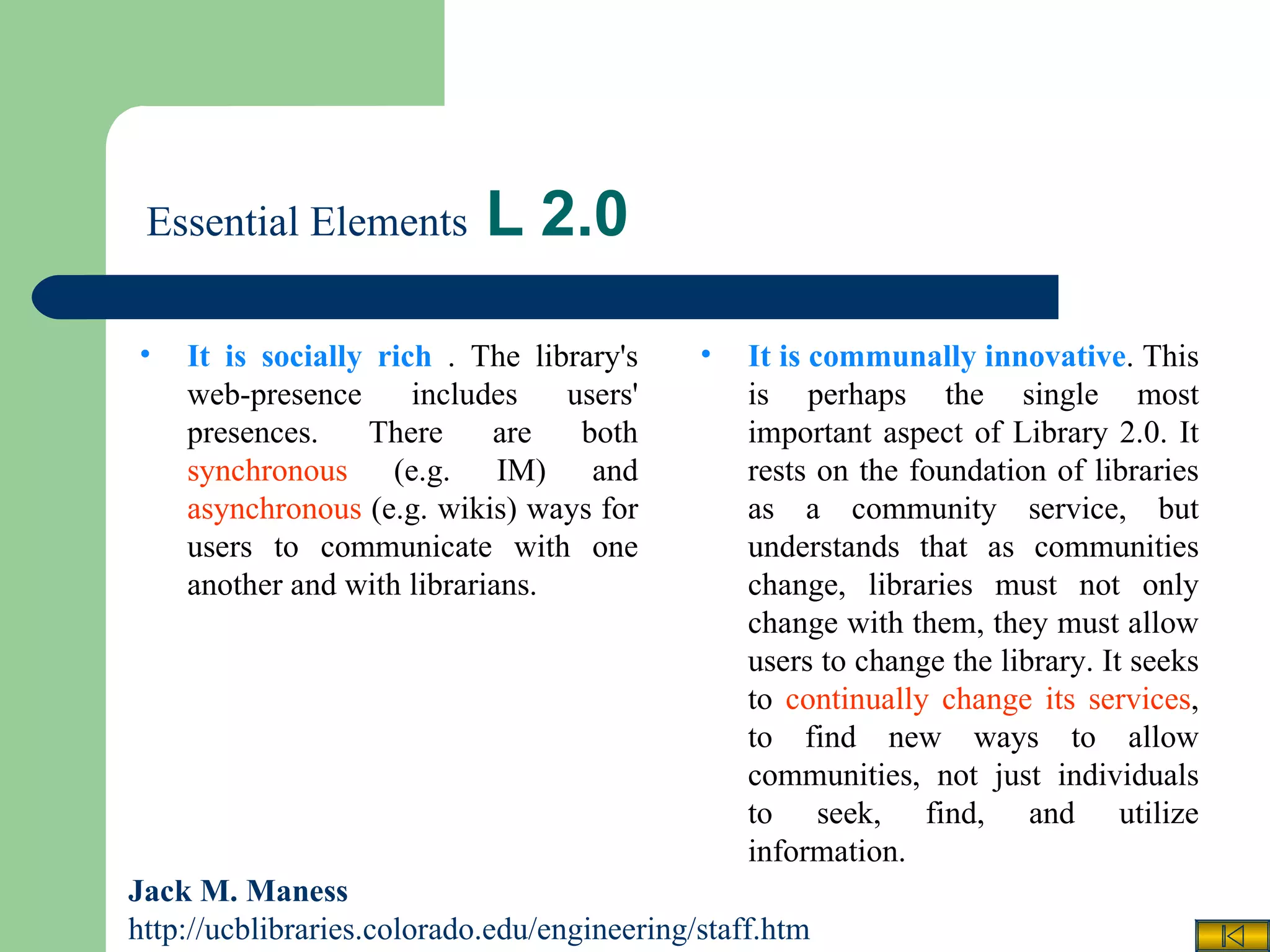
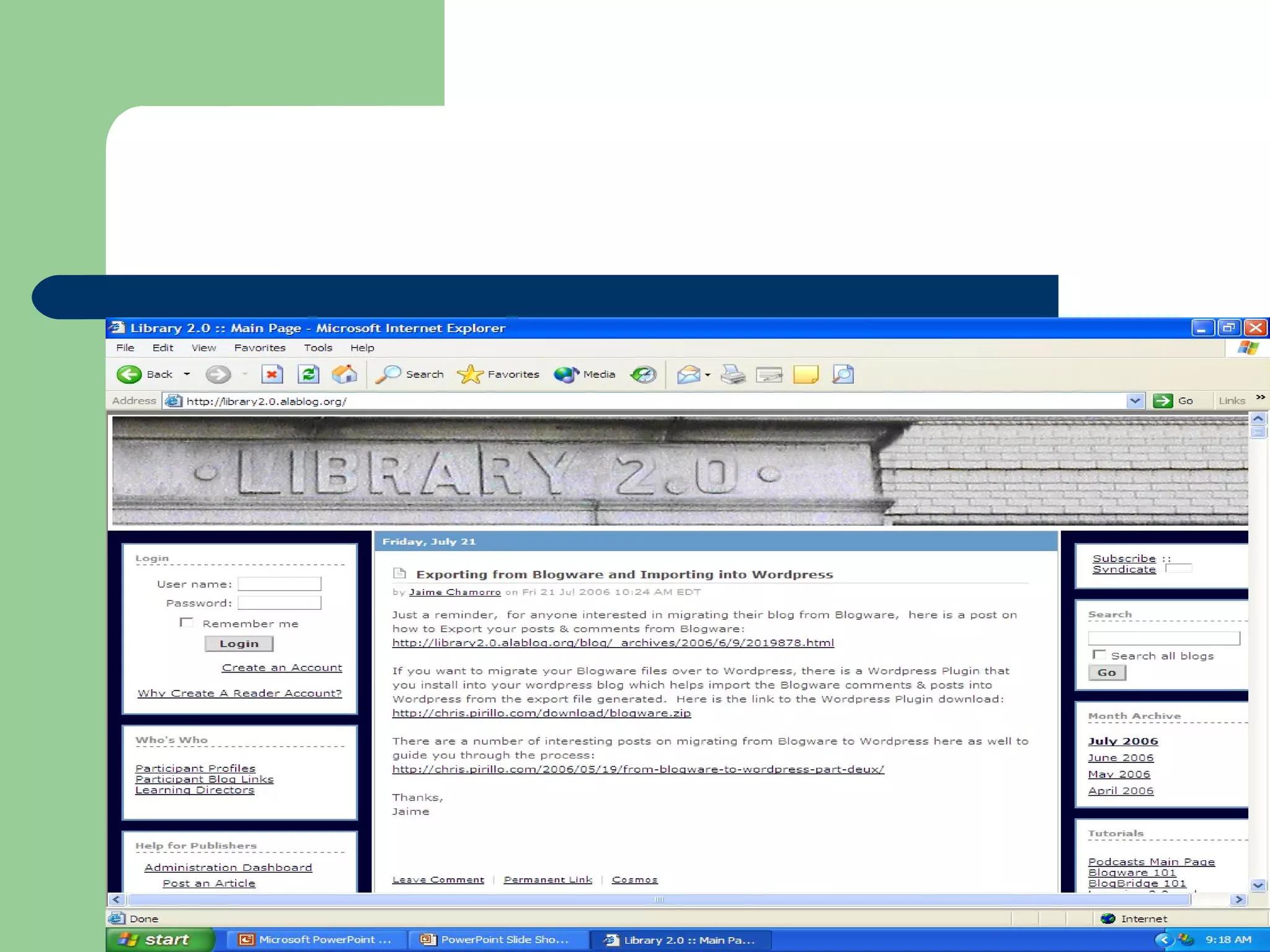
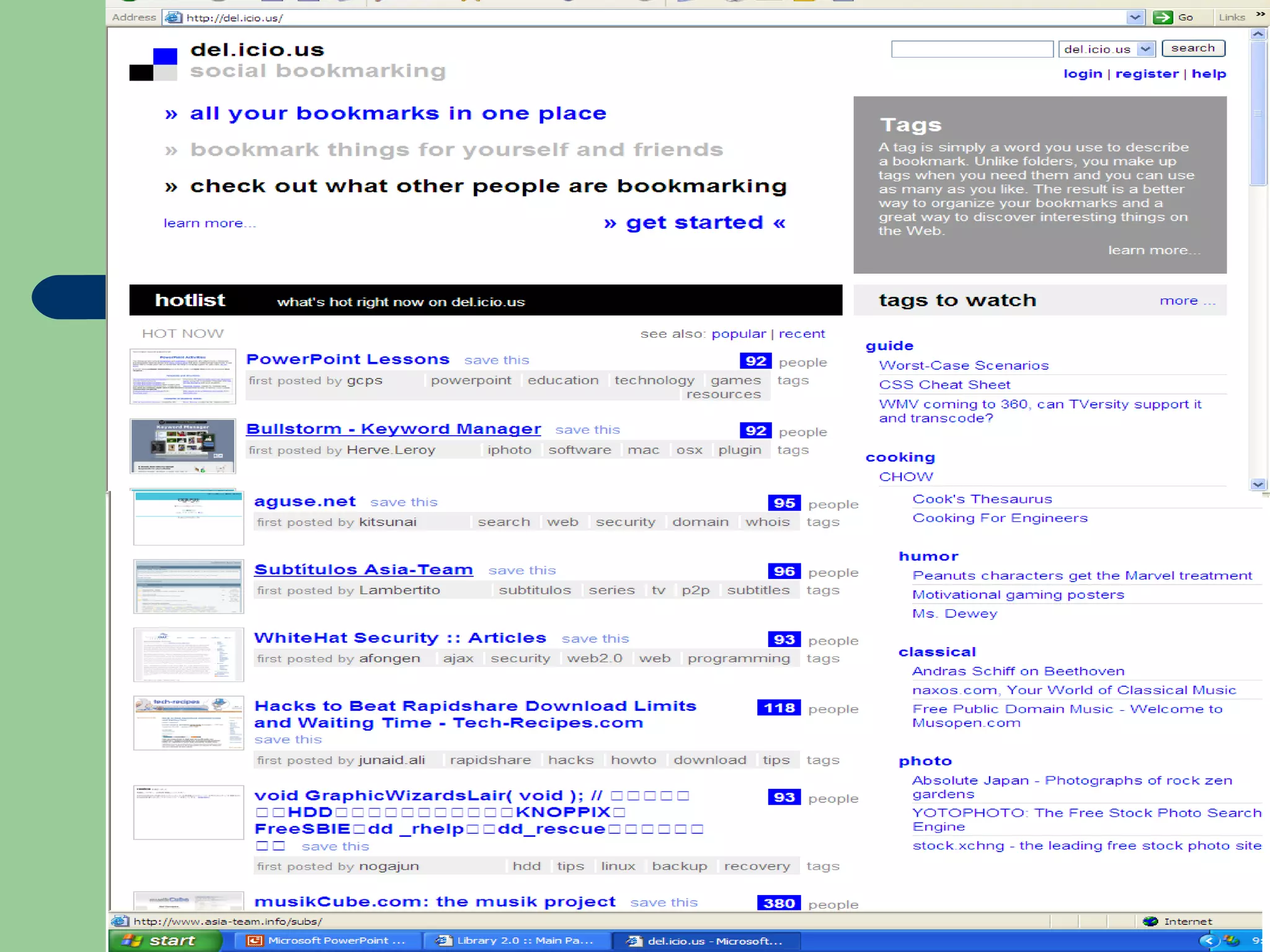
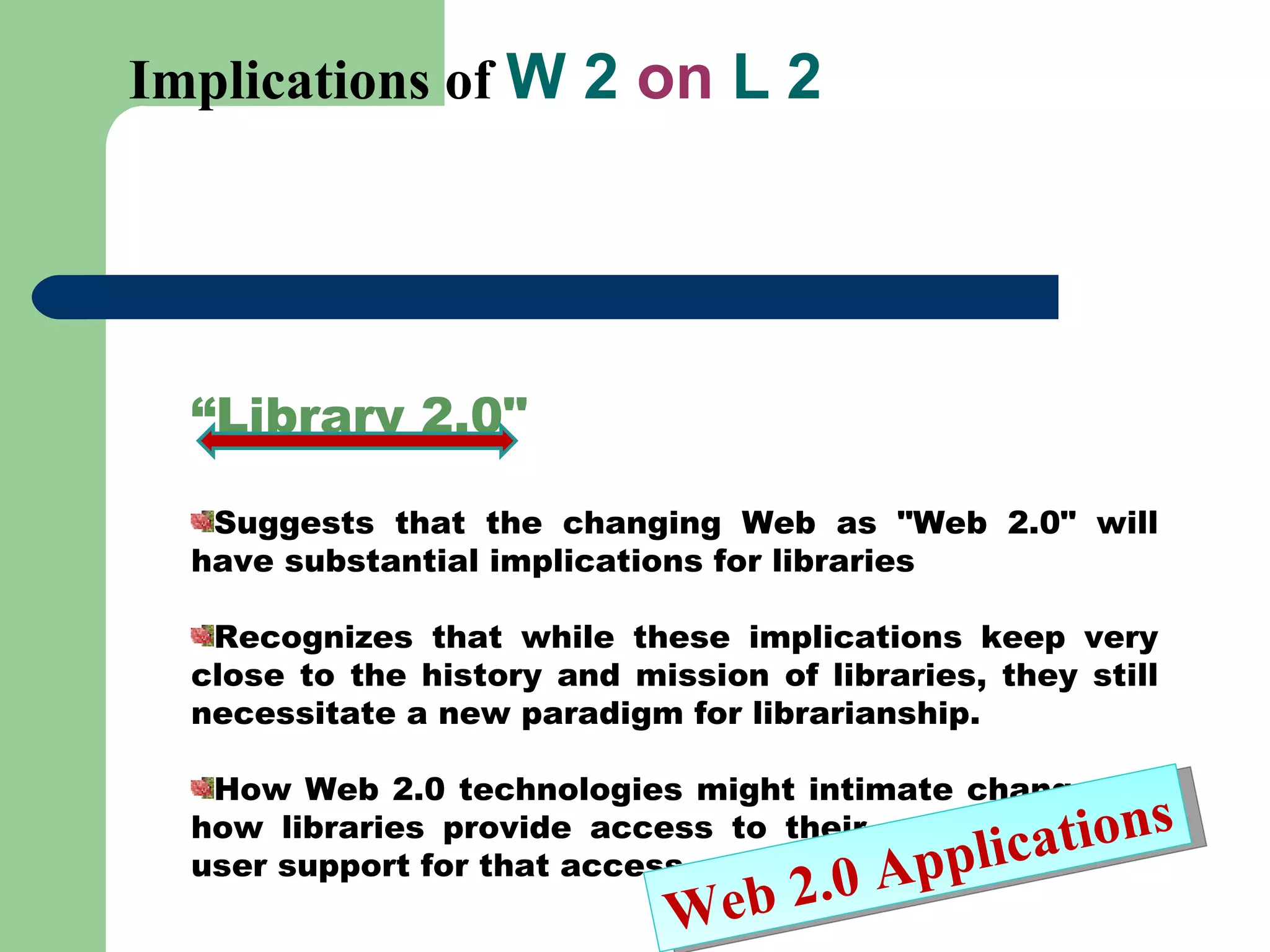
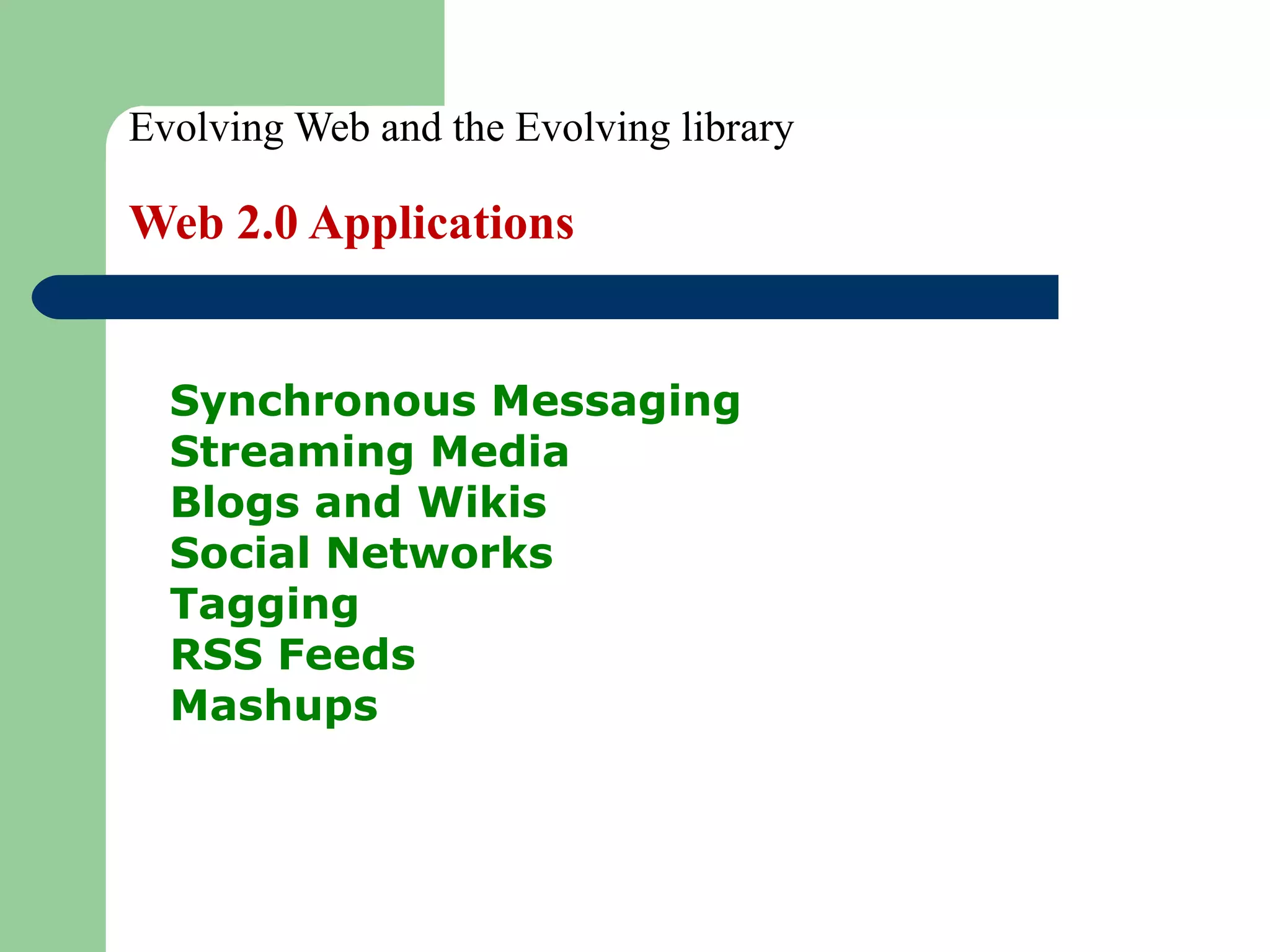
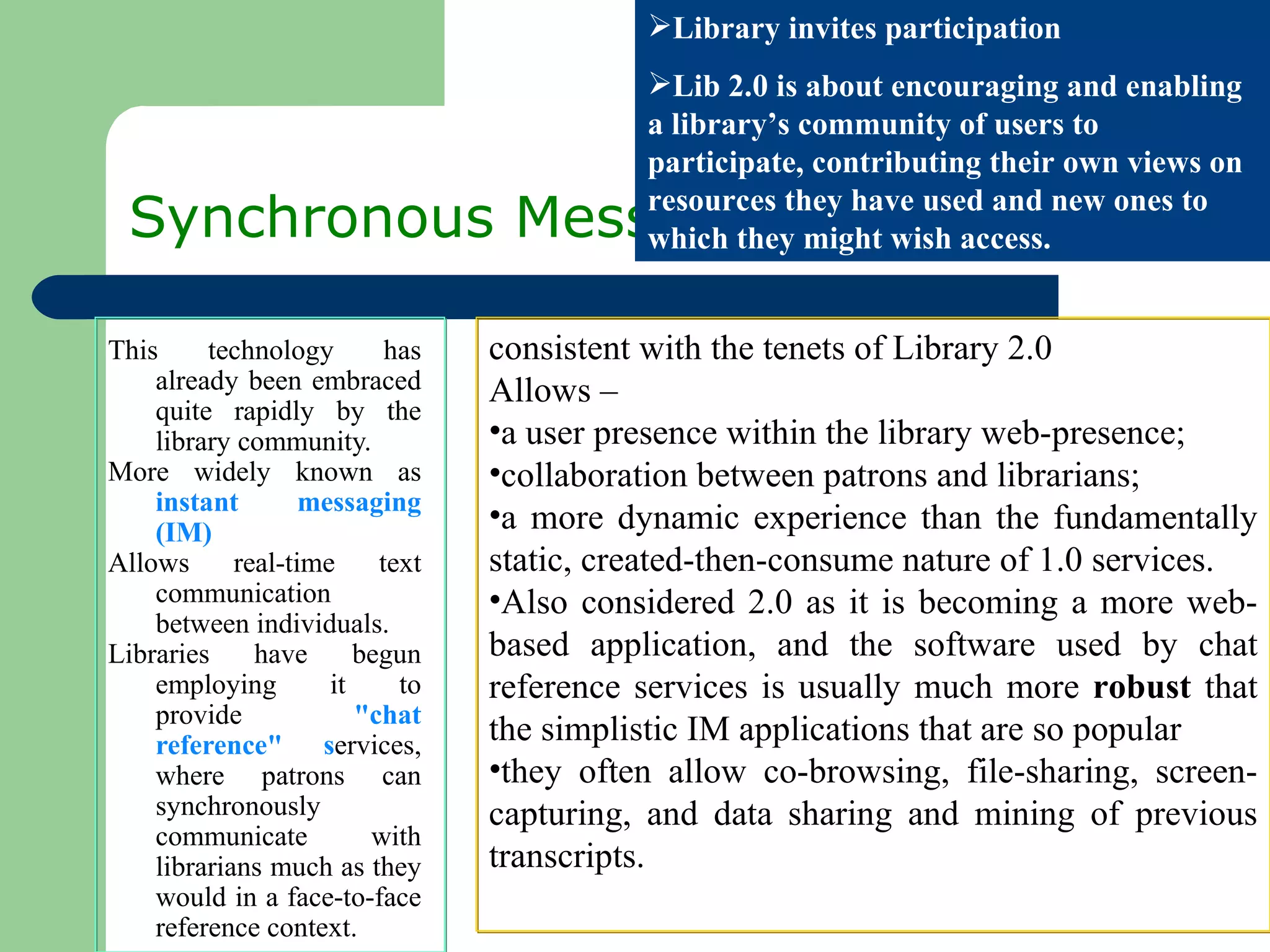
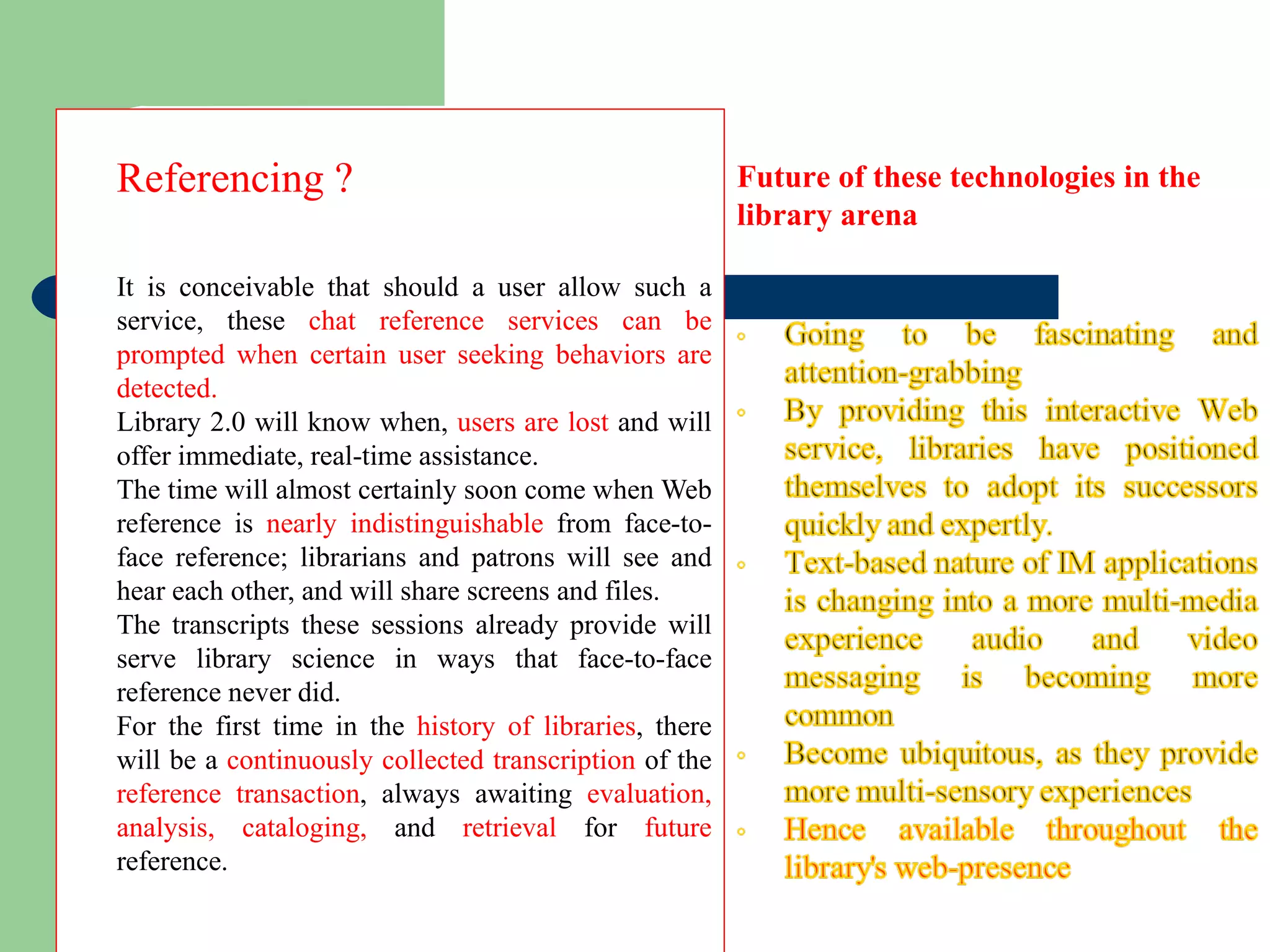
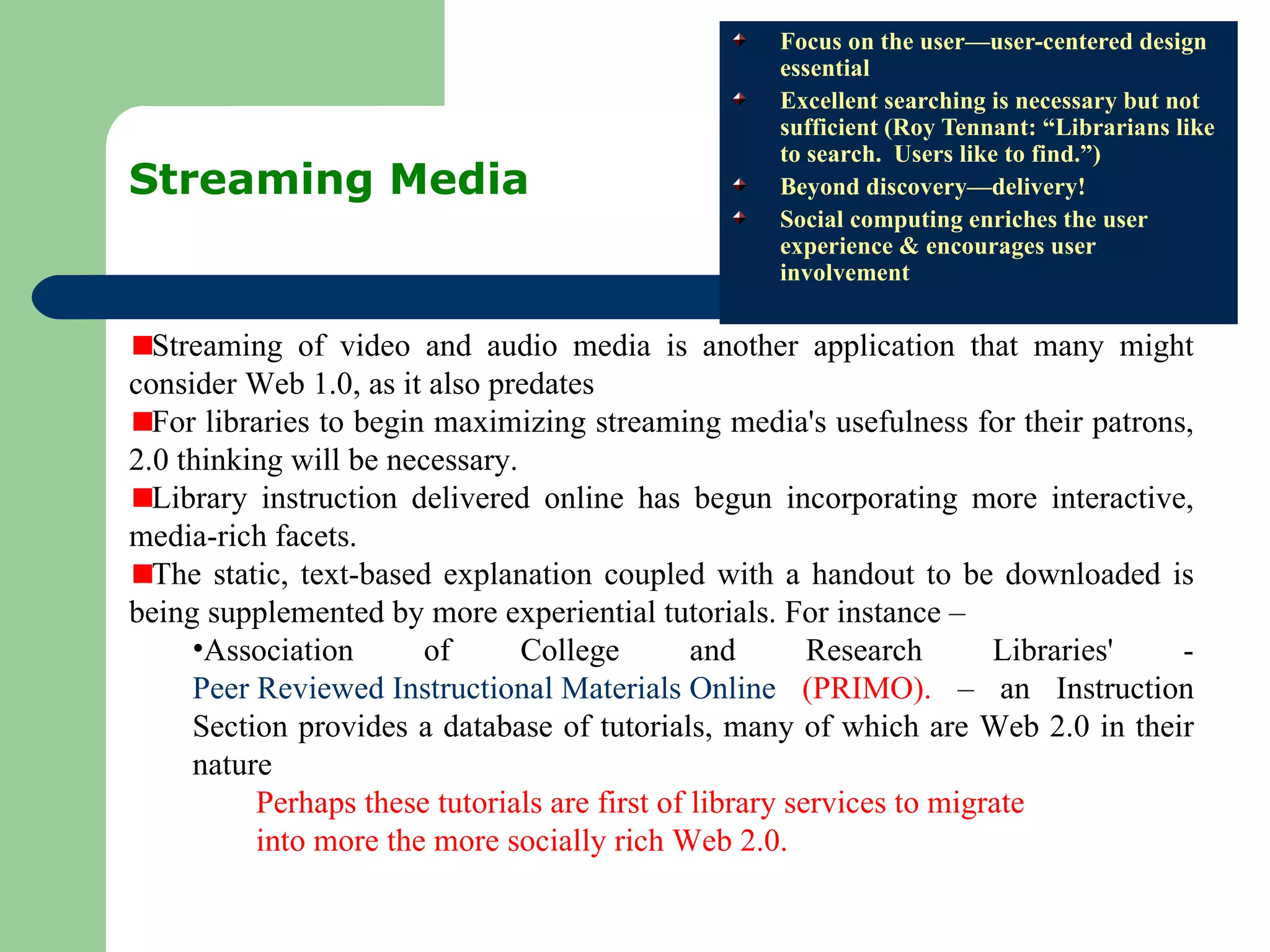
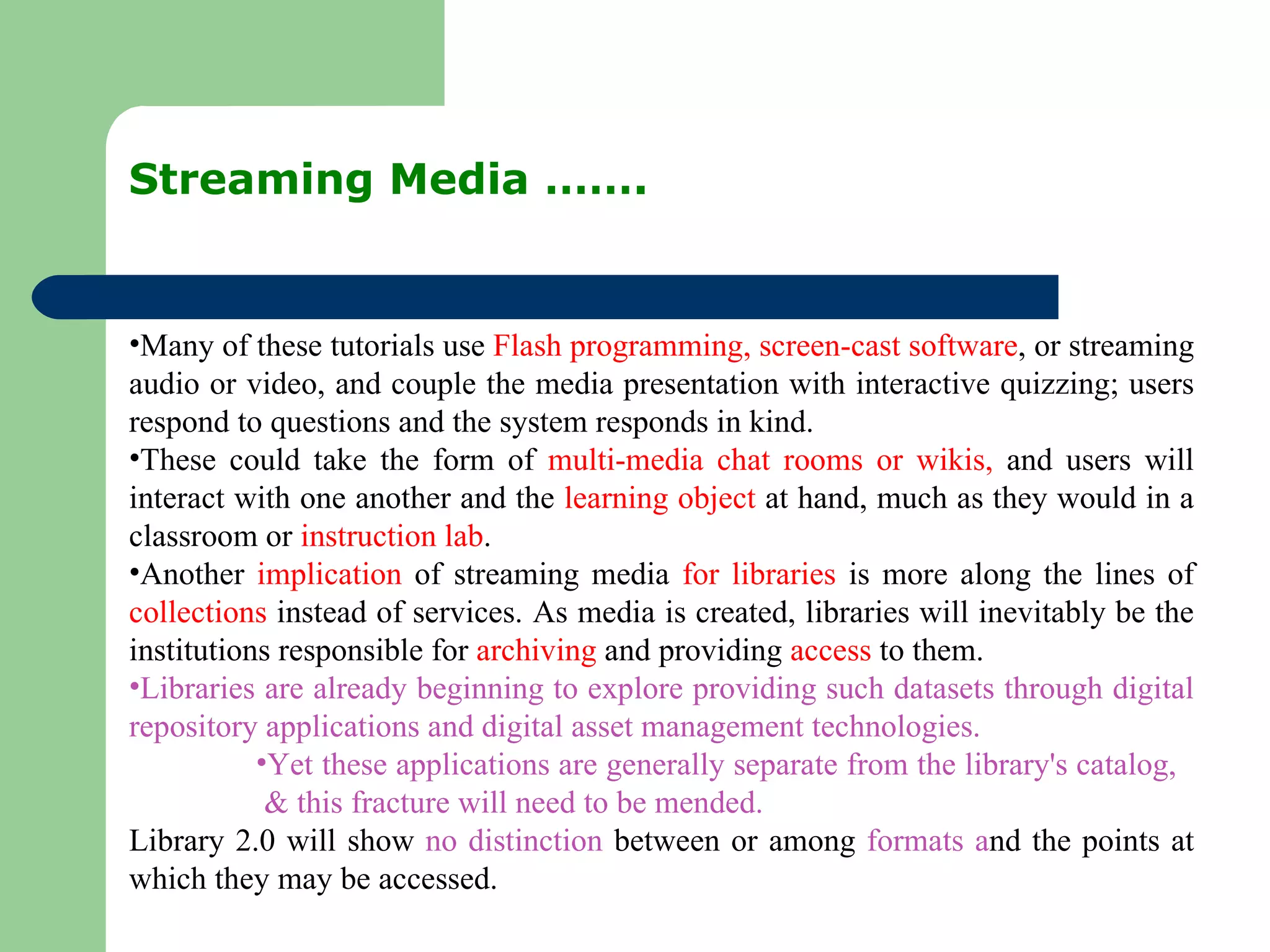
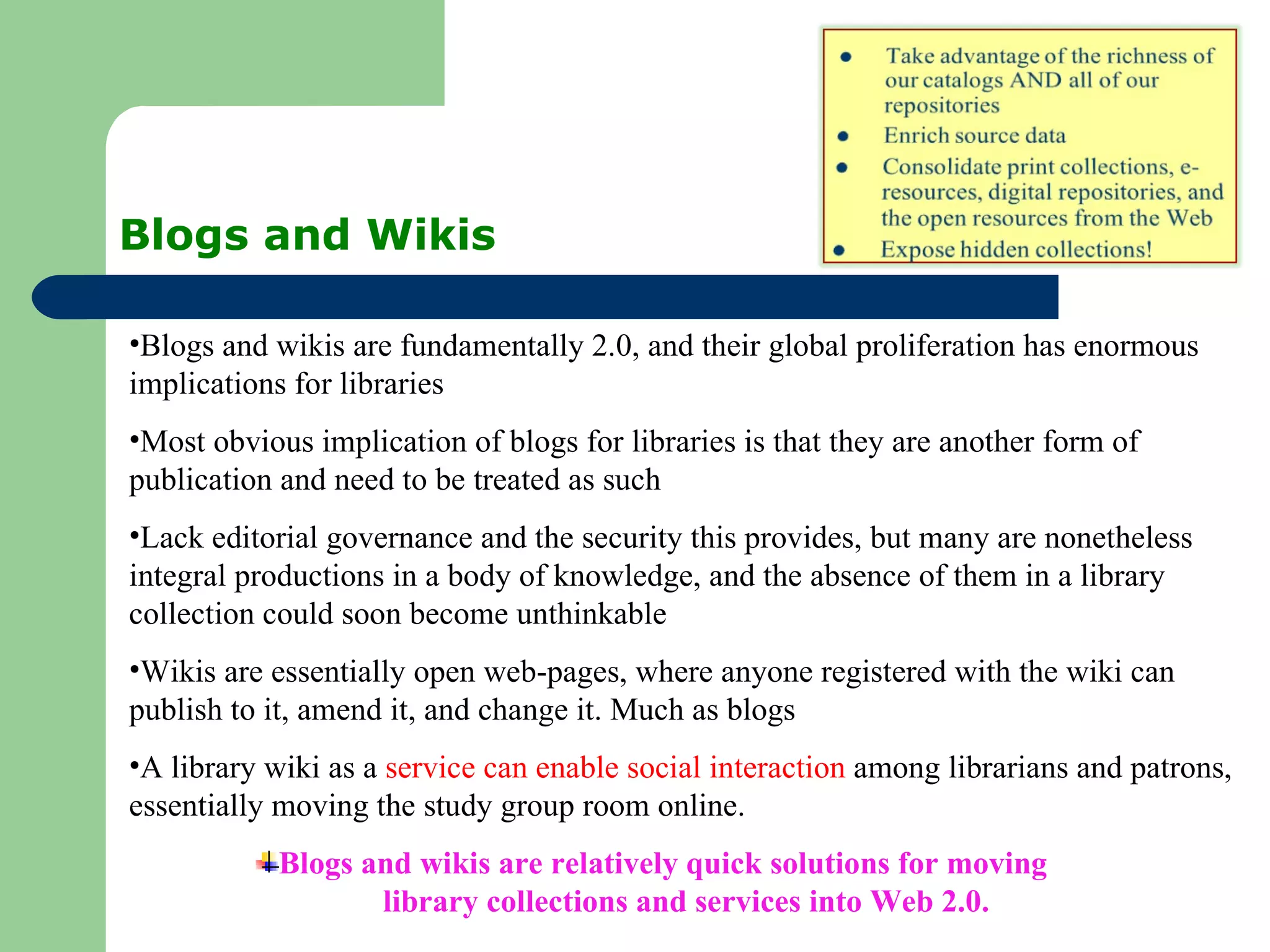
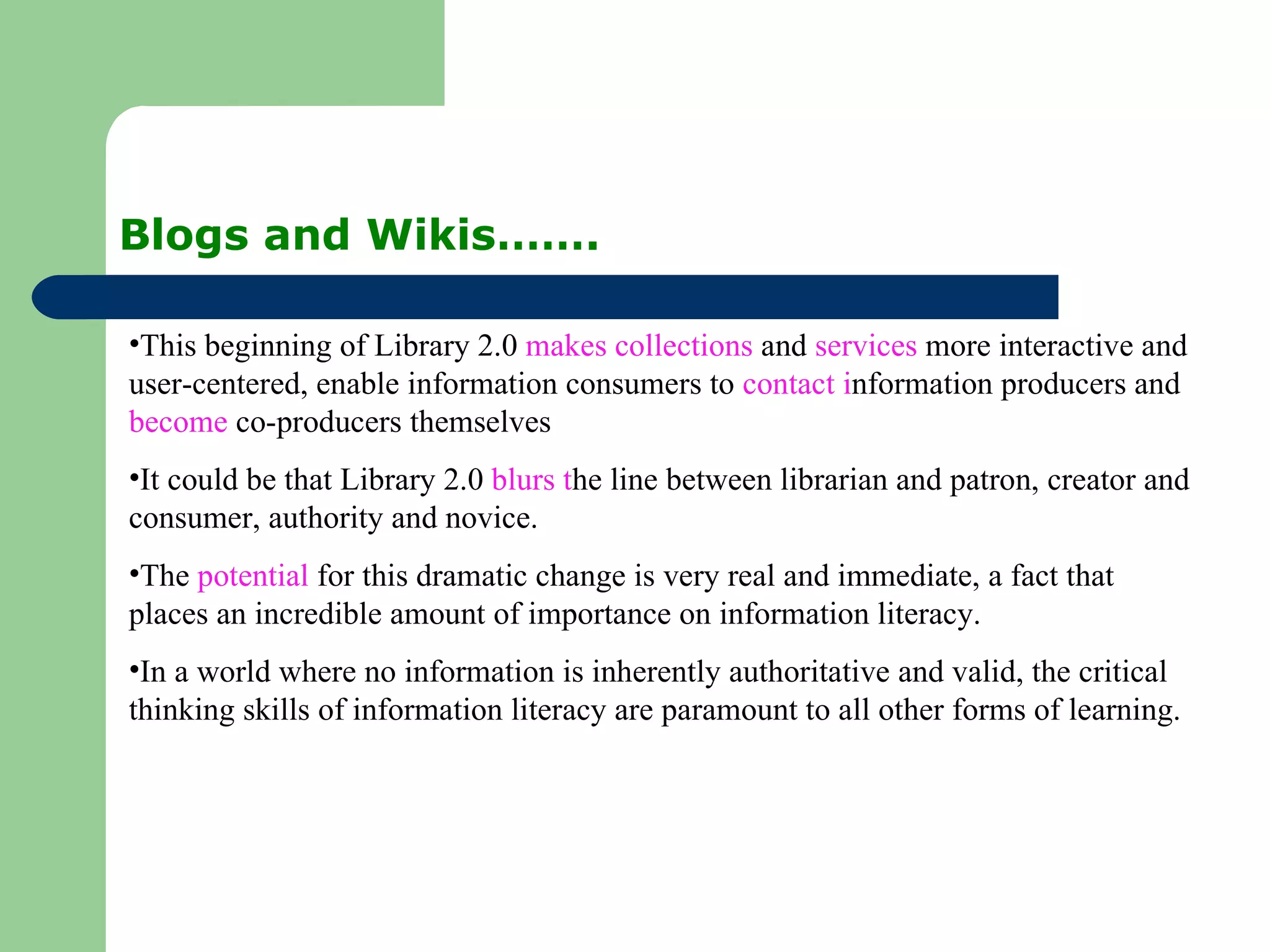
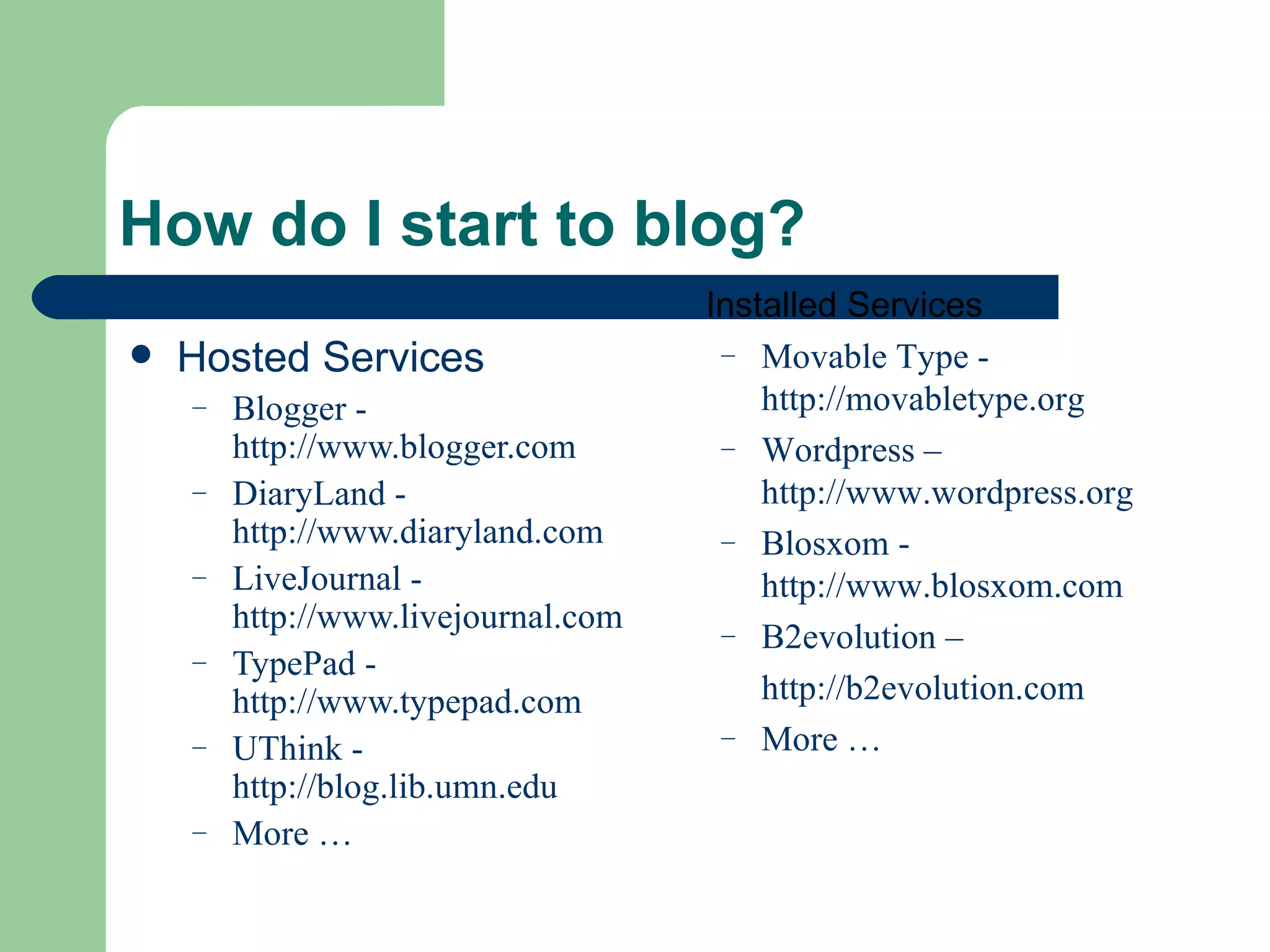
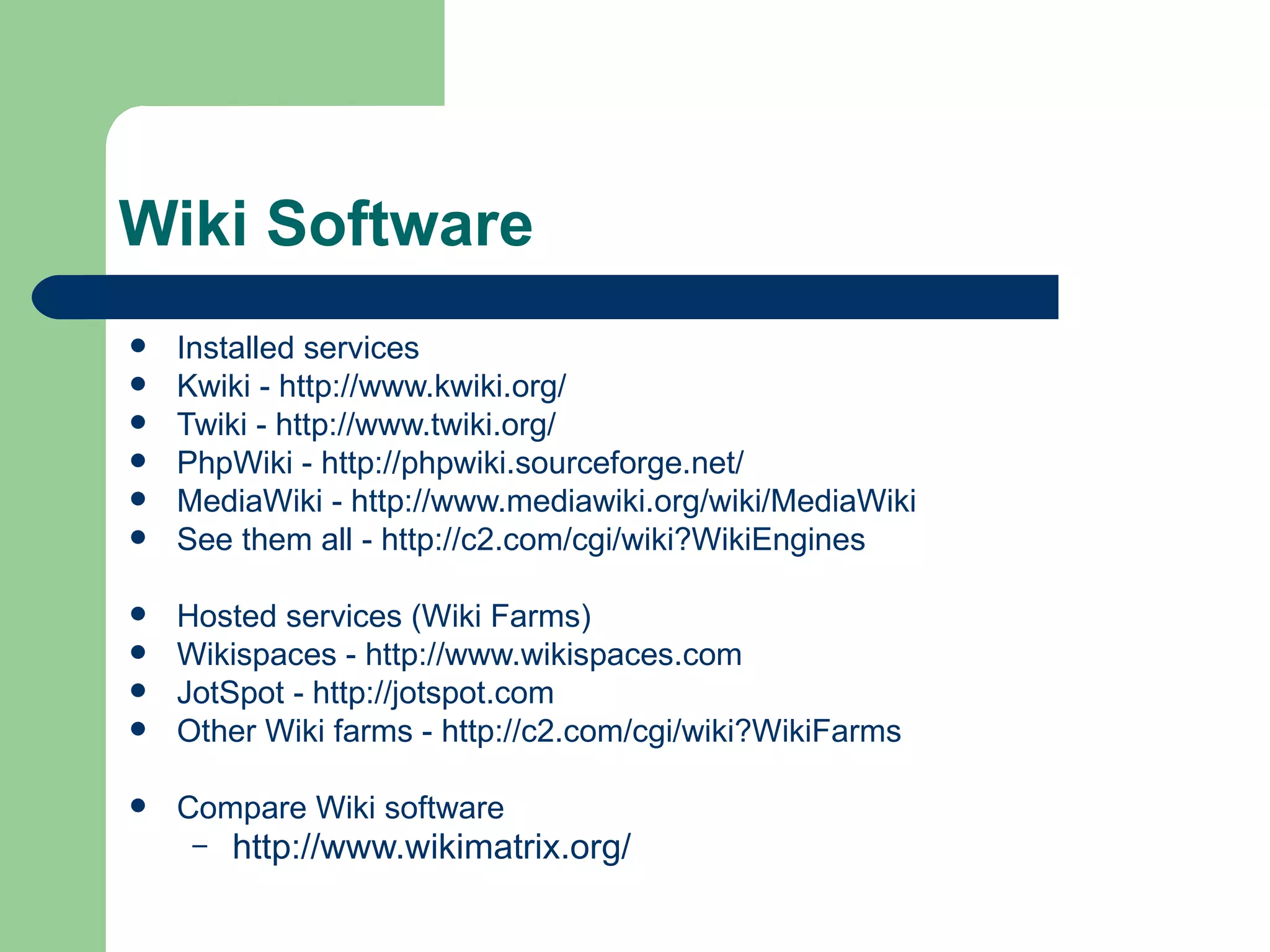
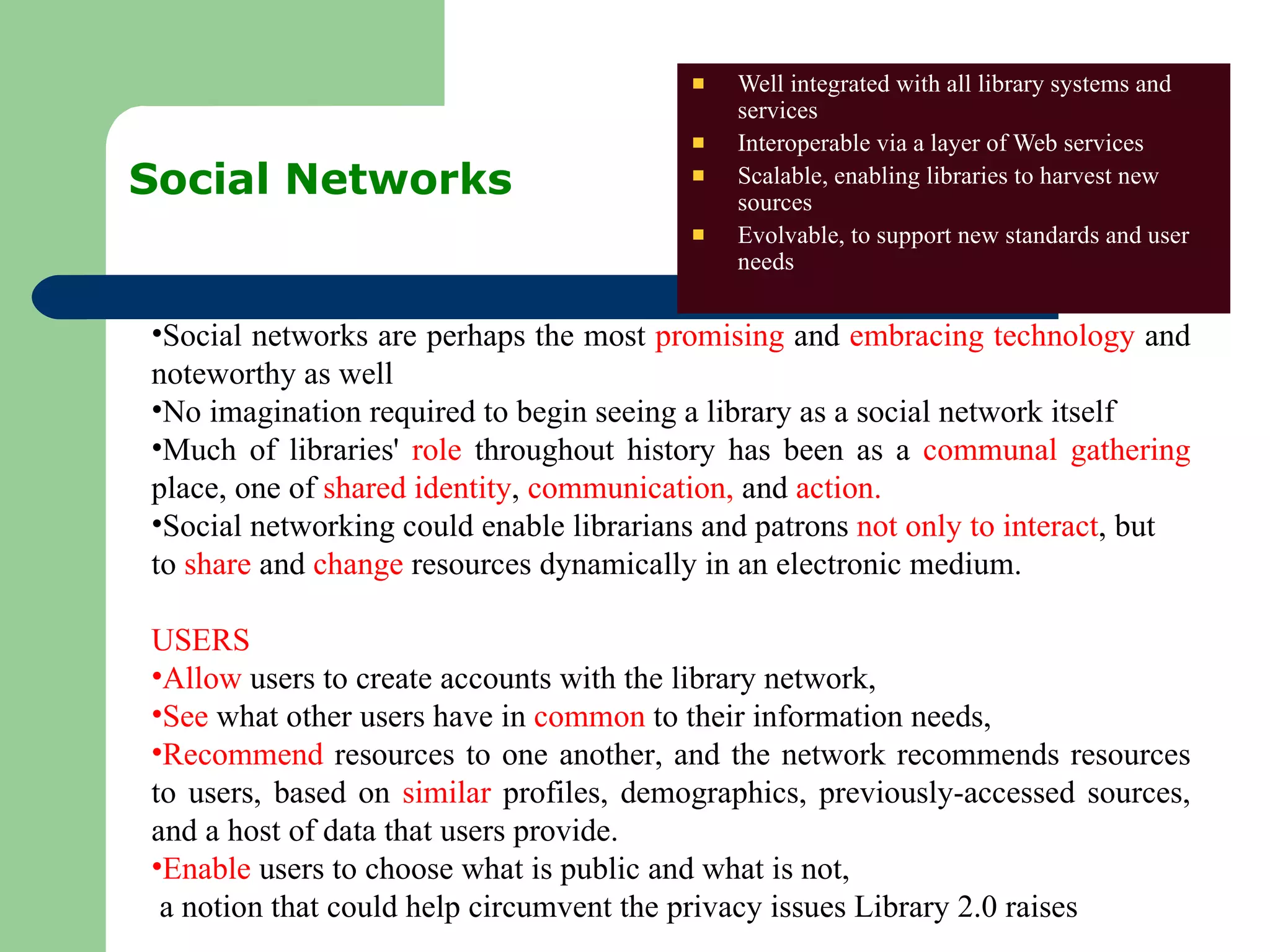
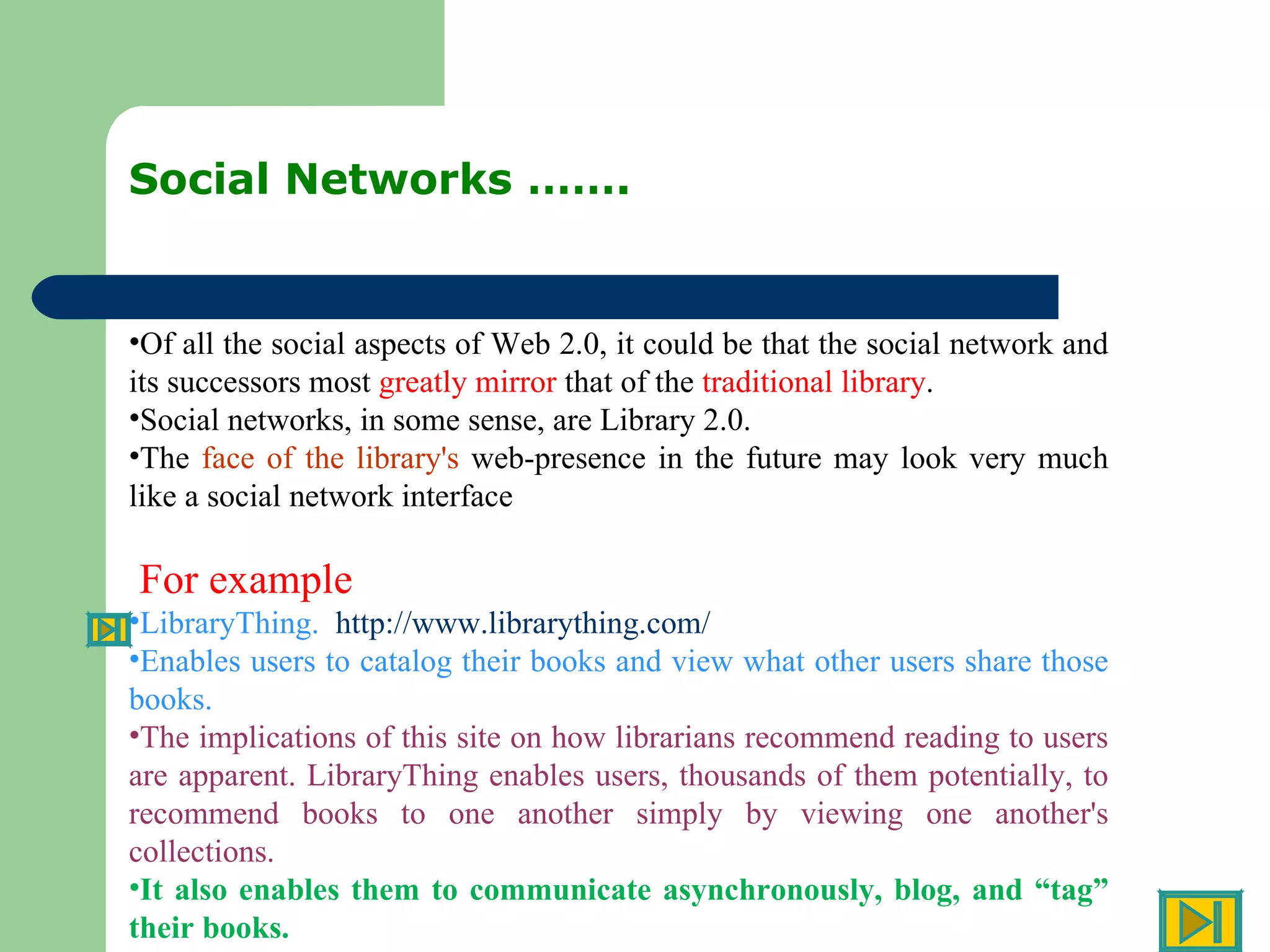
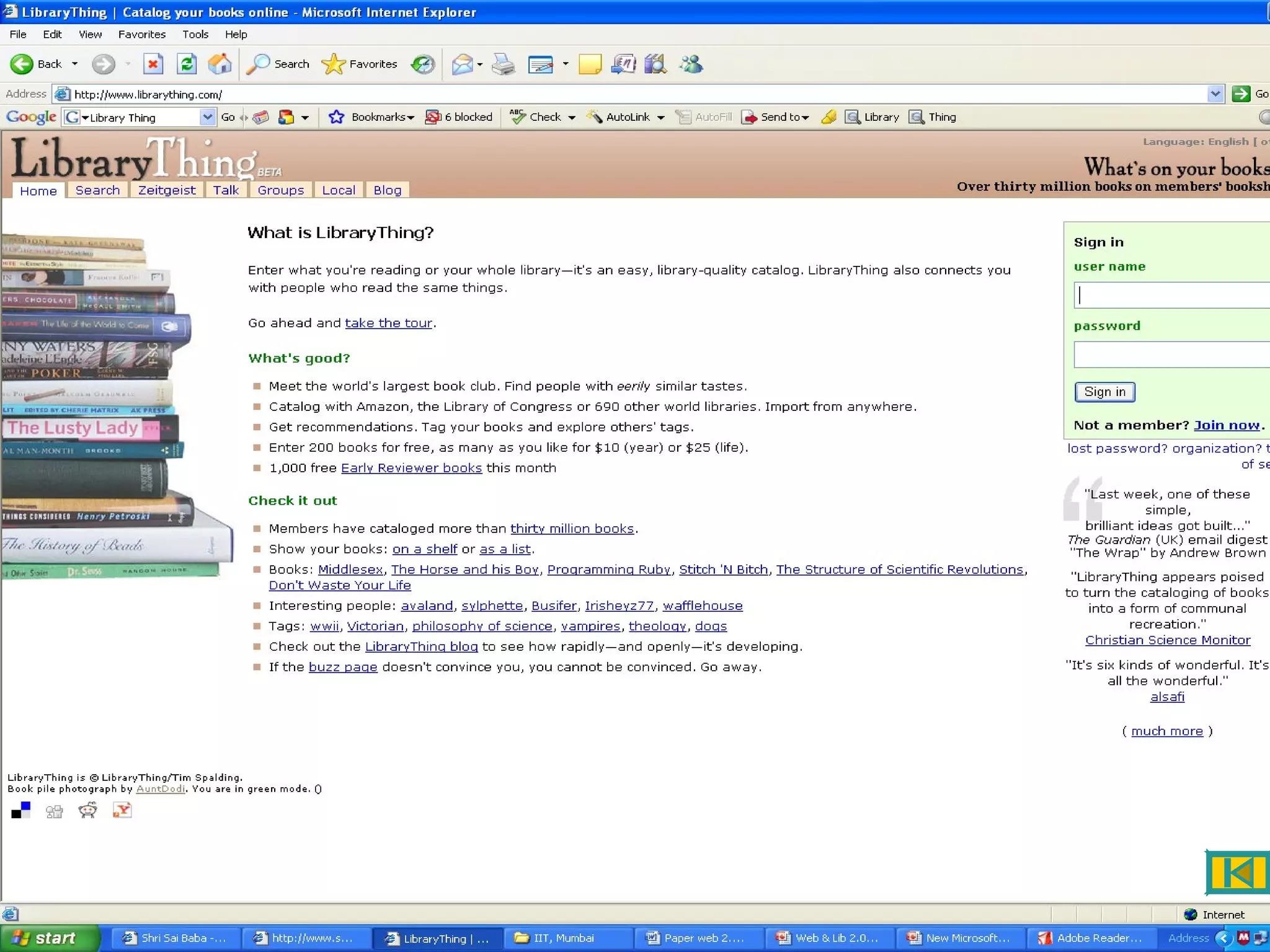
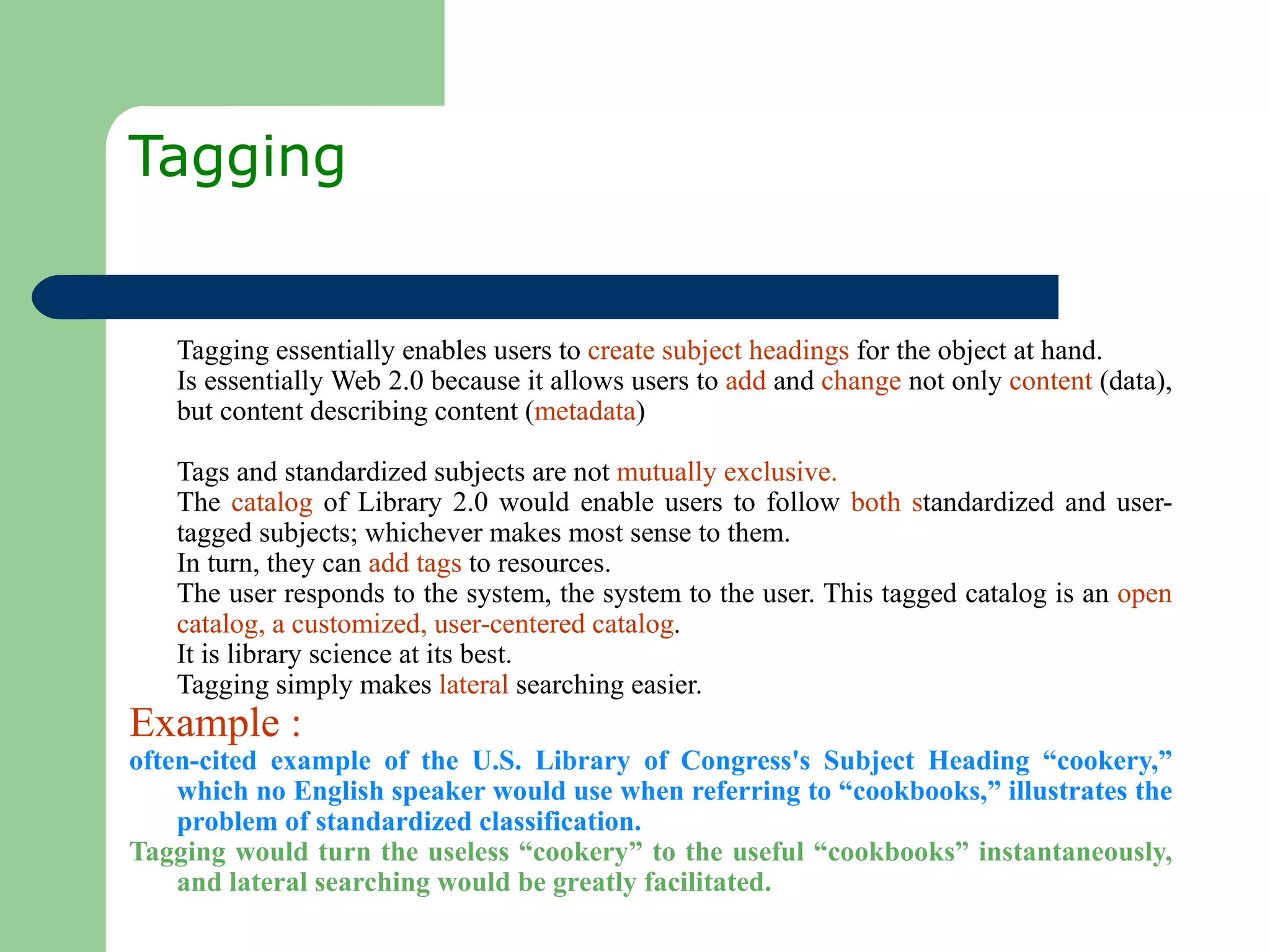
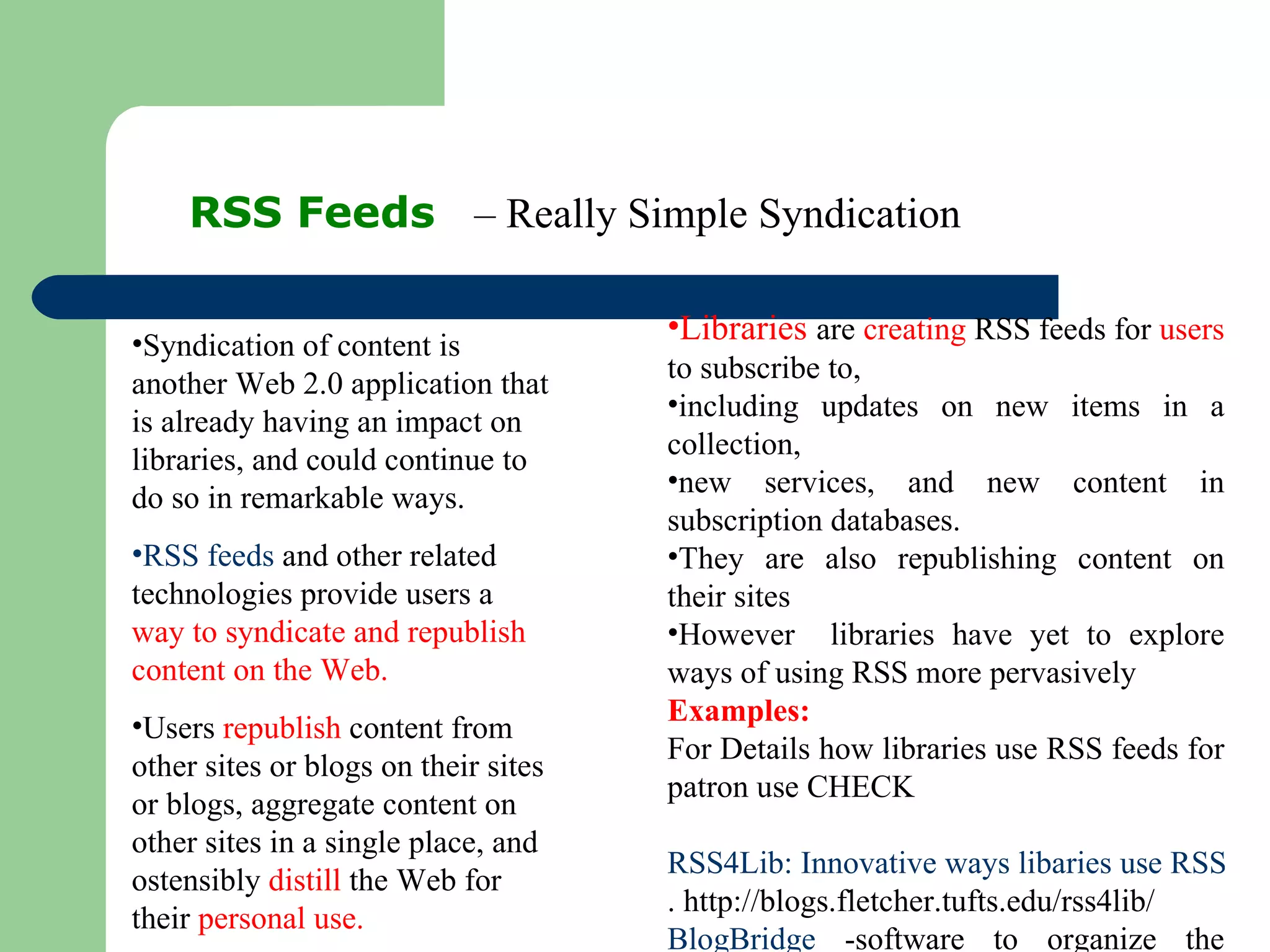
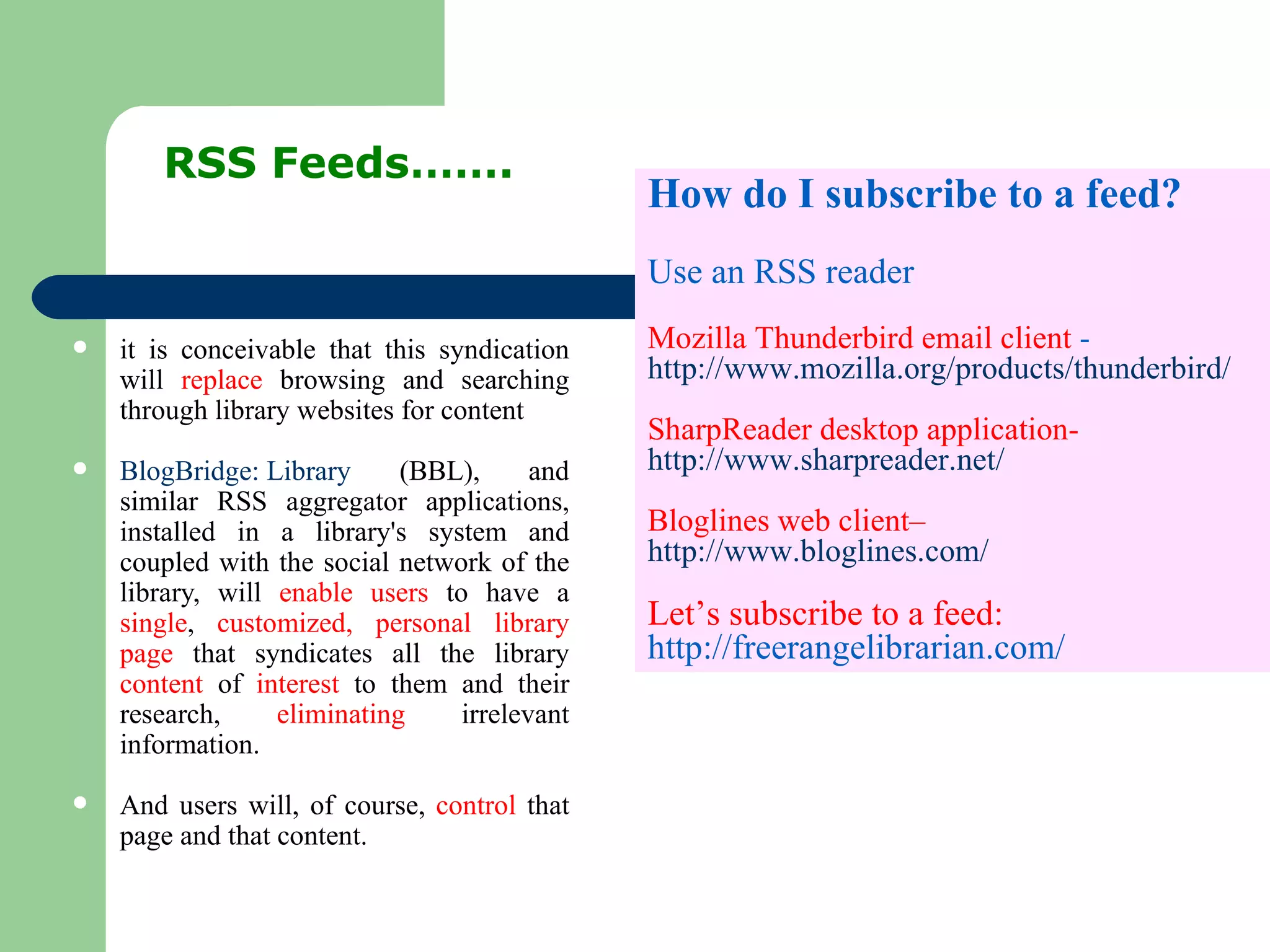
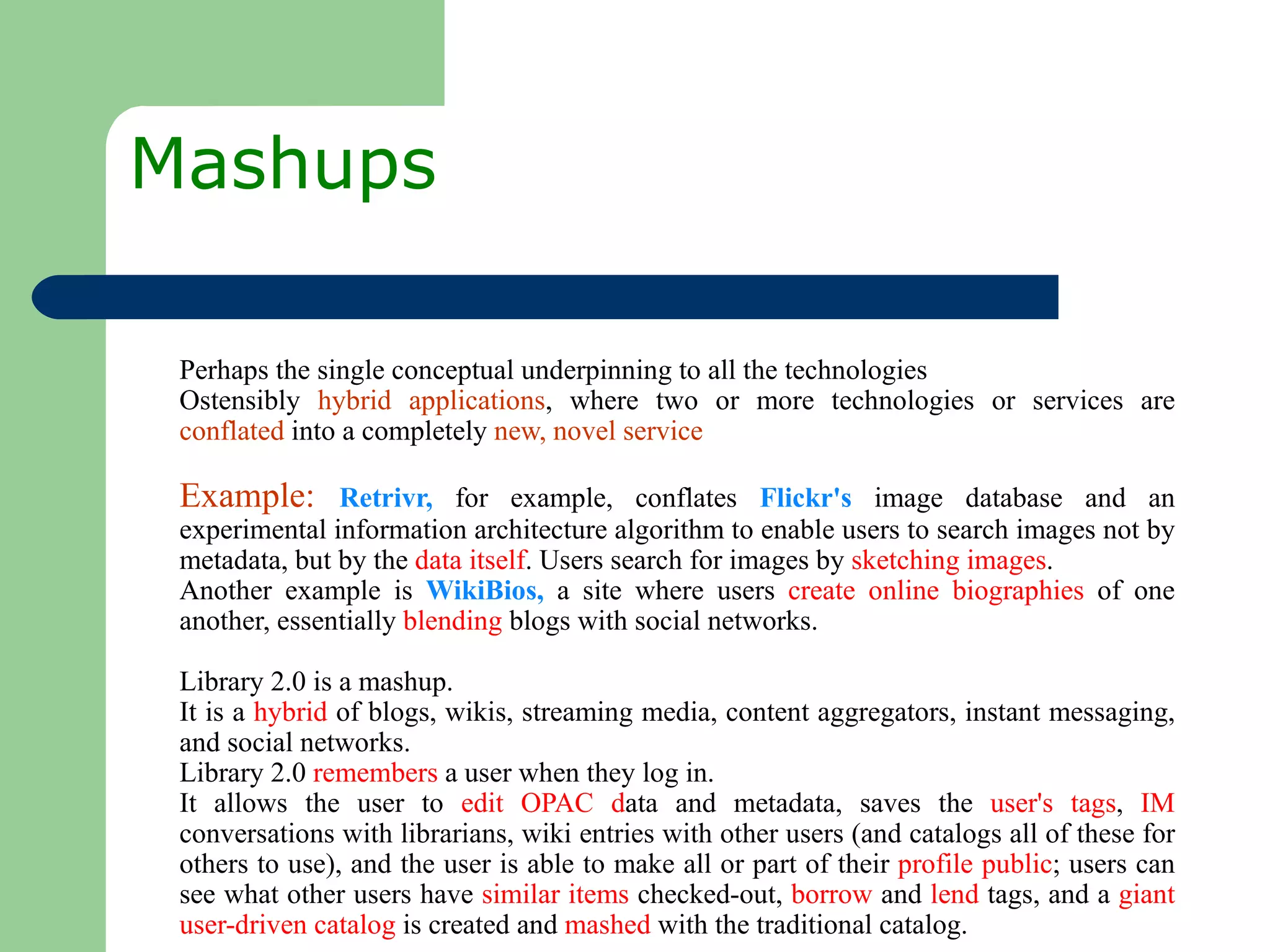
![Core Competencies 2.0 [Library & Web] Services, not packaged software, with cost-effective scalability Control over unique, hard-to-recreate data sources that get richer as more people use them Trusting users as co-developers Harnessing collective intelligence Leveraging the long tail through customer self-service Software above the level of a single device Lightweight user interfaces, development models, AND business models](https://image.slidesharecdn.com/web-lib-20usha-munsi-1234764720128846-2/75/Web-2-0-Implications-for-Library-Services-48-2048.jpg)
![How L2 works in libraries OPAC 2.0 : records tagging, RSS for search results, acquisitions and alerts, user agents, openurl, federated search, user reviews, open search, recommendations, communities (Googlezon model) Subject based wikis Bloglines trusted feeds Library blogs IM reference RSS alerts for library news Pod-video-casting guides to library services Personal search engines for reference (Swiki, Gigablast) Collaborative web (MySpace, Protopage, NetVibes…) for communicating with users OPML [see L2 ALA blog ], [ Here ] social bookmarking [see Del.icio.us ], [Here ] and social tagging [ CiteULike , Flickr …] [ Here ] for integration with VLEs …](https://image.slidesharecdn.com/web-lib-20usha-munsi-1234764720128846-2/75/Web-2-0-Implications-for-Library-Services-49-2048.jpg)
